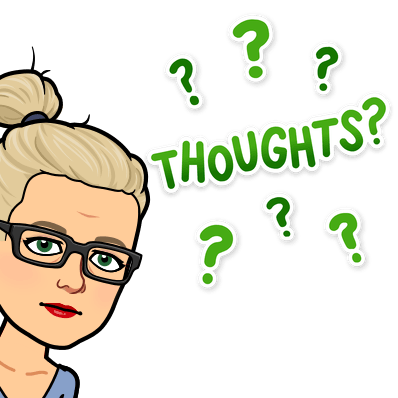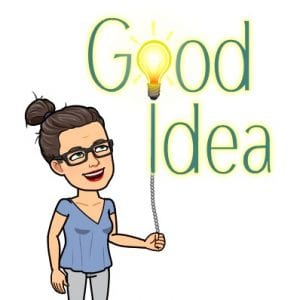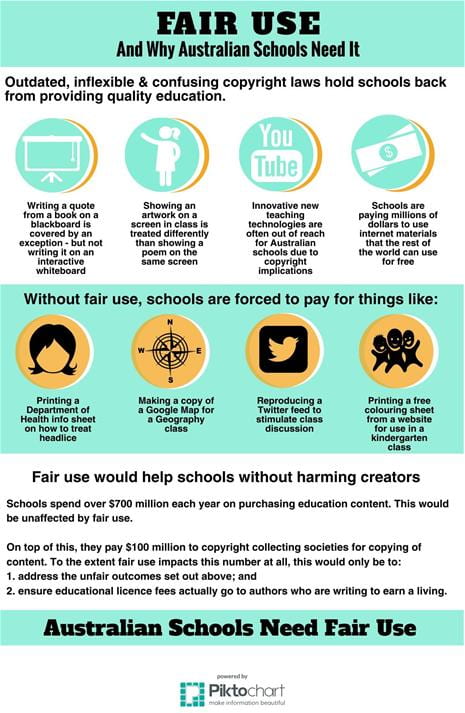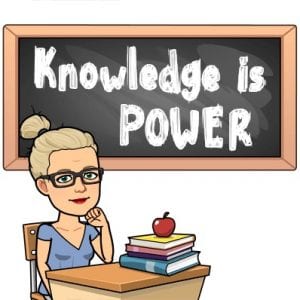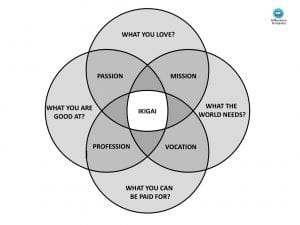Collection Development and My Future
[Reflection on ETL503 Modules 5, 6 & 7]
My two top thoughts following these modules is that there are a lot of issues that could arise from hoarding, weeding and censorship and thus clear policies and procedures are imperative.
As it is very likely that, should I be fortunate enough to get employed as a TL, I will have to write a collection development policy, I am worried I might struggle with it. I will certainly be the first to put up my hand and ask my colleagues and library network for assistance!
What I know about myself is that I struggle looking at an example of someone else’s work as a means to produce my own. I struggled to look at colleague’s work when preparing my accreditation, I struggle modifying other people’s teaching and learning units of work to suit my class or context…and critical analysis of the St Bede’s CDP, a school context in which I have very little understanding, has been very challenging. So it is unlikely that I will take much stock in using a different school’s CDP as a guide…
Alternatively, I prefer to look at professional industry recommended templates, which I’ve found more helpful personally.
As to the future of school libraries and trained school librarians, being an information literacy specialist, curriculum expert and keen marketing amateur is going to play a big part in our success. I am hopeful that I can make a difference.
Information Literacy, Learning to Read and Reading to Learn
[Reflection of ETL401 Module 5]
Hold your horses cowboy! I’ve just been triggered!
Let’s begin with learning to read and reading to learn. The (ETL401) 5th module jumps straight to reading to learn and doesn’t really mention learning to read, but it is my belief that the two are intrinsically combined and that the education system currently fails students in separating the two (Robb 2011).
Learning to read: This separation of ‘learning to read’ (for some purposes, abbreviated to ‘decoding’-although it is sometimes not referred to as this, the focus has shifted to phonics and decoding) and ‘reading to learn’ (for some purposes, abbreviated to ‘critical thought'(CILIP 2016)) has been directly witnessed and practised by me and my colleagues for at least 5 years (I started in 2014), as part of the Early Action for Success (EAfS) funding program.
This program, in phase 1, poured money into (and continues to do so to some degree) several things like ‘Instructional Leader’ Deputy Principal level positions and ‘mentoring’ time off class, and a large portion of the money has gone towards training teachers in Targeted Early Numeracy (TEN) the ‘Language Learning & Literacy in the Early Years‘ (L3) narrow pedagogies for teaching kindergarten to year 2 students foundational literacy and numeracy skills.
- [Sidebar 1: Originally, the TEN program was, in my opinion, almost completely a spin off of the Count Me in Too (CMIT) program (in which I am trained) and Developing Efficient Numeracy Strategies (DENS), using the Schedule for Early Numeracy Assessment (SENA) 1 or 2. Once trained in TEN, teachers, including myself, utilised CMIT, DENS and SENA to effectively teach the TEN math group games and lessons. Similarly, the L3 program is a spin off of Reading Recovery, linked to Best Start and focussed on kindergarten children (Howell & Neilson 2015).
- Later, L3 teacher training was revised to suite ‘stage 1’ or year 1 & 2 students (which is where I joined the training). Currently, the EAfS program is in ‘Phase 2’ and has embraced micro-level data collection and the new National Learning Progressions …I am being critical here about L3 but not without foundation (Howell & Neilson 2015 p.8).
- And don’t even get me started on the fact that the (now defunct) NSW Literacy Continuum provided for EAfS schools meant that we didn’t even crack open the NSW English Syllabus all year-much less the National Curriculum–we simply taught to and reported on the NSW Literacy and Numeracy continuums! Roar! Outrage! Sirens! Remind anyone of the teaching to the test arguments against NAPLAN? Well hello new Learning Progressions, which have replaced the previous continuums…but I digress…]
What all of this means to me at the moment, in terms of teaching Information Literacy / ‘Reading to learn’, is that, in my current context, half of any given school is focussed on ‘Learning to read’/decoding using L3 guided reading groups, using decodable/phonics/guided readers, teaching students ‘how to read’/decoding without any thought into teaching students ‘reading to learn’/critical thought.
In fact, until a student reaches a particular level of knowing ‘how to read’ (measured in our schools as reading a PM Reader level of 15, based on a 95% success benchmark or ‘running record’ of their reading of a PM Reader that they’ve read at least once before) they may then begin learning skills of ‘reading to learn’/critical thought. For some students, particularly in schools in low Socio Economic Status areas (who, coincidentally, have low NAPLAN results that qualify them for EAfS funding) they don’t reach the PM Reader level of 15 until they are 8 or 9 years old (year 3 or 4) and thus, by that point, reading (so purely focussed on ‘how’ rather ‘why’) has lost all value.
Teach Information Literacy From the Start: What I propose is to teach students, regardless of their age or decoding ability to think critically about texts, using quality texts. It is very difficult to think critically about a (commonly fiction) text that is lacking depth like the little decoding readers that are all the rage at the moment (Adoniou, Cambourne & Ewing 2018). And there is an aspect of L3 that I thought did this particularly well, called ‘Initial, Modelled and Shared readings (IMS),’ However, I was the only teacher at one school who was making time for it amongst the time-heavy requirements of ‘guided reading groups’/how to read lessons. Let’s let that sink in for a moment: nobody had time for information literacy because teaching students how to decode boring levelled readers was taking up all of their time.
Information Literacy is teaching how to think critically and this is a key part of comprehension and reading for enjoyment. In L3 IMS for stage 1 students (the kindergarten version do something similar but not to the same degree and they call it ‘Reading to’ or similar), is not exclusively the rights of L3 (see this link for further reading) and so I will go into how to run the IMS lessons and how they relate to Information Literacy and a year one (age 6-7) classroom:
- Quality texts: First, the teacher first picks a quality book like The Fantastic Flying Books of Mr Morris Lessmore (2012) by W.E. Joyce. (This was also adapted as an award winning short film (Joyce 2011)- which I just watched for the 20th time and was reduced to tears AGAIN, because I just realised the importance of Information literacy and Teacher Librarians! If you watch it, try to think of the grey people are ‘learning to read’ and the colourful ones are ‘reading to learn’).
- In the world of the story: The teacher reads the book and nobody (including the teacher is allowed to comment).
- Quality Talk Question Prompts: The teacher critically analyses the book and creates a list of possible ‘critical thought’ questions that will be expected from the students in the third reading of the book and has those ready as a reference for the second reading of the text to the students. (For an example of this, see one of my teacher prompt sheets.)
- Modelled reading(s):The teacher reads the book aloud again, possibly even a third time to the students (who are not allowed to comment) but this time the teacher can either explain the meta-language or ‘difficult’ words in the text and then model thinking critically about the book with thoughts based on the prepared list of questions (without actually saying those questions out loud).
- Shared reading: The teacher reads the book a final time and then releases the students to comment freely about the text in a round table / dinner scenario. For younger students, I use a behaviour management / talking technique of a smiley ball that gets passed to those who want to speak and if you have a turn speaking you put a popsicle stick in front of you. If you don’t have a turn speaking about the text, I can see clearly and offer prompts based on my prepared question sheet to help reluctant students.
- Writing: I like to link this to writing lessons, sometimes filming the students
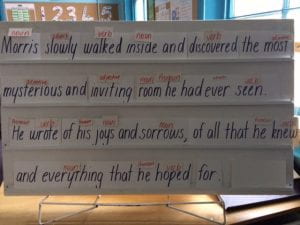
My AL Sentence Board for the Fantastic Flying Books of Mr Morris Lessmore and typing their discussions (or using my Accelerated Literacy sentence board to work on writing conventions), so that they can use what they said about the text in their writing but this is just something that I do and not really related to IMS reading/L3.
So what this all means for me in practice as a TL, is that I need to continue to read to my students and continue to utilise information literacy / critical thought strategies (CILIP 2016) that are proven to improve literacy outcomes for students (regardless of their reading ‘levels’), including aspects of L3 and aspects of Accelerated Literacy because student access to quality (fiction and non-fiction) texts and the ability to practice Information Literacy skills is a key component to learning how to read AND reading to learn.
Next post: Information Literacy for reading to learn and inquiry teaching models…I promise…
References
Adoniou, M, Cambourne, B. & Ewing R. (2018). What are decodable readers and do they work? Retrieved from: https://theconversation.com/what-are-decodable-readers-and-do-they-work-106067
CILIP Information Literacy Group. (2016). Information literacy definitions.
Howell & Neilson (2015). A critique of the L3 early years literacy program. Learning Difficulties Australia, Volume 47(2). pp.7-pp.12. Retrieved from https://www.ldaustralia.org/client/documents/Bulletin%20Winter%202015.pdf
Joyce, W. E. (2012). The Fantastic Flying Books of Mr Morris Lessmore. London: Simon & Schuster.
Joyce, W. E. [Screen name] (2011, January 30). The Fantastic Flying Books of Mr Morris Lessmore. [Video File]. Retrieved from: https://youtu.be/Ad3CMri3hOs
Robb, L. (2011). The myth of learn to read/read to learn. Scholastic Instructor. Retrieved from http://www.scholastic.com/teachers/article/myth-learn-readread-learn
The New Paradigm Part 2 of 2
[ETL401 Module 4]
The New Paradigm: Let’s do both inquiry based learning and outcomes
In the previous post, I discussed collaboration and the steps that I think might be needed to get to a point where I can collaborate with the majority of teachers.
I’ve looked at the research and looked at the *information literacy inquiry models (particularly those more suited to primary and infants classes, such as Big6 and Super3) and okay, I’m in. Where do I sign?
*References in support of Inquiry based teaching and learning:
Bonanno, K. (2015). F-10 Inquiry skills scope and sequence and F-10 core skills and tools. Eduwebinar Pty Ltd, Zillmere, Queensland. Retrieved from: https://s2.amazonaws.com/scope-sequence/Bonanno-curriculum_mapping_v1.pdf
FitzGerald, L (2015) Guided Inquiry in practice, Scan 34/4,16-27
Kuhlthau, C., Maniotes, L. & Caspari, A. (2015) GI: Learning in the 21st century, 2nd edition. Santa Barbara, California: Libraries Unlimited.
Global Education Leadership Programme (GELP, 2011). We wanted to talk about 21st Century education. Retrieved from:https://www.youtube.com/watch?v=nA1Aqp0sPQo
O’Connell, J. (2012). So you think they can learn? Scan, 31, May, 5-11
The New Paradigm Part 1 of 2
(Reflection ETL401 Module 4 – The Teacher Librarian and the Curriculum)
(RSA Animate 2008) This is a very powerful video that offers a dichotomous view of an ‘education paradigm’.
Throwing the baby out with the bath water: While I agree that there has been (or in some cases, needs to be) a shift in the Australian education system, I am hesitant to throw out the baby with the bath water and dispose of outcomes. I have had great success with my students by utilising the NSW syllabus document outcomes and indicators. These have been regularly updated and rearranged over the years and each update, in my opinion, has improved the approach.
Similarly, so have approaches such as ‘play based learning’ or the ‘Reggio Emilia Approach’ / the environment as the ‘third teacher’ (Wein 2015), integrated units such as COGS and inquiry based learning (IBL) such as The Big6 or the Super3 / project based learning (PBL) models evolved over time and have been accepted and used by teachers to varying degrees and with varying degrees of success.
A Breath of Fresh Air: Anyone in the education system for more than 5 years will have seen enough new ideas blow in to the educational sphere to know that they generally blow straight back out to make room for the next big breeze, and leave very little in their wake in terms of real change.
I don’t think this ‘New Paradigm’ is a situation of ‘outcomes based learning’ vs ‘inquiry based  learning.’ I don’t think the two need to be pitted against each other in an argument reminiscent of the recent arguments about how to teach literacy as seen in media and other outlets, for example as per this 2017 blog post by Eleanor Heaton about phonics versus the whole language approach.
learning.’ I don’t think the two need to be pitted against each other in an argument reminiscent of the recent arguments about how to teach literacy as seen in media and other outlets, for example as per this 2017 blog post by Eleanor Heaton about phonics versus the whole language approach.
I see no reason why we can’t have both and simply be more flexible in the application of outcomes to meet real individual student needs.
The real issues with outcome based teaching are based in 1. a lack of authentic growth mindset (Dweck 2006) in adults and students – an inability to see mistakes as part of learning, 2. the social debate regarding reporting to parents and telling the students themselves or their parents that their child has or has not met stage outcomes based on a ‘letter’ mark or tick in a box. Far better, according to Hattie & Peddie (2003), for the system to simply say, ‘this is what sorts of things you/your child can do well, these are things that they are still learning or here are the learning goals for the future.’ It isn’t the outcomes at fault, it is how we’ve applied them to our practice as educators.
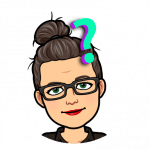 [Sidebar 1: To this end, I am extremely interested in the Quality Teaching Framework to improve the structure of lesson delivery (if this is done through inquiry based teaching then so be it) and reading more about ability/interest/friendship grouping of students as opposed to age/year/stage grouping of students.]
[Sidebar 1: To this end, I am extremely interested in the Quality Teaching Framework to improve the structure of lesson delivery (if this is done through inquiry based teaching then so be it) and reading more about ability/interest/friendship grouping of students as opposed to age/year/stage grouping of students.]
[Sidebar 2: If you think Outcome based teaching is holding students back, don’t even get me started on the ‘Learning Progressions,’ ‘NAPLAN’ and the ‘Our Schools’ Website / league tables which have resulted in ‘teaching to the test’ and ‘school shopping.’ Gah.]
[Sidebar 3: If outcome models are so flawed and inquiry models are so perfect, why aren’t universities scrapping outcome based marking criteria and using inquiry models?]
Making assumptions about students: How students find information and their level of ability, particularly when it comes to electronic resources varies widely – much more so than adults realise and according to Coombes, “The basic premise of the Net Generation theory, that familiarity with technology equates with efficient and effective use and these achievements are only applicable to a specific group because they have grown up with technology, is flawed” (Coombes 2009, pp.32).
Technology is a tool, rather than a solution (Coombes 2009). Society has a new ‘digital age’ environment in which we live and we are expecting students to learn how to navigate it simply by being born amongst it. We have a new set of digital expectations in our society but have neglected to update our education system of our students to enable them to meet those expectations.
Information Search Process (ISP) skills / information literacy: Being able to recognise functions of a digital device does not automatically mean that students are able to access, process and absorb information on that they come across on said device (Coombes 2009). Students are overly reliant on the internet, have limited ability to search effectively, and are rarely able to critically evaluate information that they find (Coombes 2009).
The Role of Teacher Librarians (et al.): Educators have responsibility to lift their game when it comes to teaching students information literacy / searching skills such as collecting, managing and evaluating information (particularly when they believe the first thing that appears in their search is the most relevant or most accurate when in fact the first thing that comes up is based on their prior searches and the search engine’s popularity algorithms), finding the information again at a later date, and storing information for future use (Combes, 2007b in Coombes 2009).
Evidence and Assessment within the library: I like the list of ideas in ETL401 Module 3 (based on Valenza 2015) for evidence that the library program is of benefit to the school teaching and learning programs and curriculum. However, I am wary of introducing something that is trivial or that will not stand the test of time or that might sit in a filing cabinet – lost and forgotten.
For that reason, I will use the Quality Teaching Framework and the subsequent evaluation sheet (that I modified on GoogleDocs) to evaluate my lessons or units of work professionally, and will also use the (yet to be created) school library website or more private/access restricted photo/video-based programs (where accepted by the school) for evidence of student engagement or achievement such as ClassDojo, Seesaw or ClassCraft. The benefit of these applications is that they are also able to be used by students themselves, with any device (at home or at school).
I’m looking at you, teachers who profess to be techno-phobes! As Coombes’ 2009 work was written 10 years ago, and research within her article is based on the 10 to ‘teen’ age range, most of the students in her focus are now adults and quite possibly, teachers themselves. Those who are from current and previous generations, as educators, need to be aware of our own gaps in information literacy so that we can stop the cycle of poor information seeking skills!
The Blame Game: What I’ve also seen in education, in varying degrees based on context, is a lack of personal and professional reflection. A lack of ‘mindfulness’ and being in the moment. A wish for the utopian environment and an unrealistic desire for perfect students who fit into a mould and live up to unrealistic expectations and students who are compliant rather than collaborative (Goss & Sonnemann 2017).
This results in a filtering down of ‘blame’ for the poor foundational (primarily literacy and numeracy) skills that students have when they arrive into high school. The high school teachers blame the stage 3 teachers. The stage 3  teachers blame the stage 2 teachers. The stage 2 teachers blame the stage 1 teachers. The stage 1 teachers blame the kindergarten/prep teachers. The kindy/prep teachers blame the preschools. (And everybody blames the RFF teachers and the parents and finally, the students themselves).
teachers blame the stage 2 teachers. The stage 2 teachers blame the stage 1 teachers. The stage 1 teachers blame the kindergarten/prep teachers. The kindy/prep teachers blame the preschools. (And everybody blames the RFF teachers and the parents and finally, the students themselves).
What I’d like to see is every person involved in education taking a look in the mirror and reflecting daily on their pedagogical practice. What I’d like to see is everyone practising mindfulness–thoughtfully doing what they can with the students and contexts that they have in the moment in time in which they are living, and authentic growth mindset–appreciating that mistakes are part of learning.
References:
Combes, B. (2009). Generation Y: Are they really digital natives or more like digital refugees? Synergy, 7(1), 31-40
Dweck, C. (2016). What having a “growth mindset” actually means. Harvard Business Review, 13, 213-226.
Goss, P. & Sonnemann, J. (2017). Engaging Students – Creating classrooms that improve learning. Retrieved from: https://grattan.edu.au/wp-content/uploads/2017/02/Engaging-students-creating-classrooms-that-improve-learning.pdf
Hattie, J., & Peddie, R. (2003). School reports: “Praising with faint damns.” Journal issue, 3.
RSA Animate – Robinson, K. (2008). Changing educational paradigms. Retrieved from https://www.youtube.com/watch?v=zDZFcDGpL4U#aid=P8wNMEma2ng
Valenza, J. (2015). Evolving with evidence: Leveraging new tools for EBP. Knowledge Quest. 43/3, 36-43
Wien, C. A. (2015). Emergent curriculum in the primary classroom: Interpreting the Reggio Emilia approach in schools. Teachers College Press.
Creating a Collaborative Climate – The Triple C’s
[Reflection of ETL401 & ETL503 (The TL Role in Collaboration)] (*addendum 16 September 2019 for ETL504)
 I think I’ve been pretty clear in my stance on the impact of temporary and casual work environments to the collaborative climate. If not, then I suppose I should mention here how much it wears away at collaboration to have individuals fighting for the renewals of their contracts: completely and utterly.
I think I’ve been pretty clear in my stance on the impact of temporary and casual work environments to the collaborative climate. If not, then I suppose I should mention here how much it wears away at collaboration to have individuals fighting for the renewals of their contracts: completely and utterly.
The casualisation of the teaching workforce, particularly in my personal working context, is not something I am able to change as an individual. Helping create a collaborative climate (despite the political climate) however, I can try to change.
Before we jump head first into collaborating with classroom teachers on an inquiry unit of work, let’s take a step back. I mean, yes we want to design and implement inquiry learning and literature programs and we certainly want to help embed digital formats. But we need to confront the elephant in the room in stead of simply shrugging our shoulders and saying ‘some teachers just don’t want to collaborate.’
I would argue that some teachers haven’t had positive collaborative experiences in the past (experiencing – much like a lot of students must experience – forced compliance rather than collaboration) or some teachers expect judgement in disguise rather than collaboration.
We ran into this in a school where we were trying to roll out Quality Teaching Rounds (QTR). We surveyed the staff to identify their concerns and these were the results:
Q. Why do we have to? (Comfort Zones: Not comfortable being watched / observed / critiqued; Doubt ‘teamwork’ capabilities; Criteria for involvement unclear; Feel pressured to do it).
A. (summarised) Be the change you wish to see in the world. Also, the NSW DET require a colleague observe you once a year so it might as well have a clear structure and limits and offer real improvement to your teaching.
Q. What’s the benefit? (Is there follow up; What do ‘we’ get out of it; Evidence of benefits; How does it improve the school; How valuable is it versus mentoring which we do already).
A. (shown QTR training slides proving benefits based on research)
Q. How could we possibly do it? (Logistics / Resources: What types of lessons have to be observed, eg 1:1, whole class, small group; Time off class; Casuals; Time required for prep work outside school hours).
A. (Thankfully, the principal had budgeted for the resources and did not have a set idea of what sort of lessons were required for observation).
The QTR team did our best with the resources and research provided by the QT Framework training to answer these concerns in a specially allocated staff meeting. We then surveyed the staff to determine their level of interest, which was about 70% in favour, and a few other teachers joined the second ‘Quality Teaching Round.’
Furthermore, in this process and in the readings for ETL401 Module 4, it occurred to me that an aspect of (primary) teaching that impacts collaboration is an ingrained and embedded culture of isolation. A teacher, predominantly alone in a room of students (or a Teacher Librarian on their own in the library) cannot effectively collaborate with other teachers as well as someone working in an office filled with cubicles or a group of engineers on a building site.
Another aspect of collaboration are the social norms of either Australian culture, or the culture of a town or city, or the culture of a school context. An immigrant and possible ASD person myself, I struggle with social norms on a daily basis.
I am also struck by the massive gap in the expectations of our TL role as collaborators, where we are expected to just jump in there and collaborate with teaching and learning programs with people who don’t know anything about us and of whom we also know very little…it is a bit ‘chicken before the egg’!
The OECD-UNICEF (2016) Education Working paper’s ‘dimensions of learning’ for organisation transformation touches on this (developing and sharing a student centred vision, having a culture of support for staff learning opportunities, promoting team collaborative professional development and embedding systems that support it, establishing daily expectations or ‘culture’ of inquiry, innovation and exploration–including staff in leadership roles, and learning with and from larger learning systems outside of the school context or direct governing body).
Logistically though, what does this look like? I love the idea of the ATSI community’s ‘yarning circle’. But how do I help create a ‘yarning circle’ or gathering spot where we can get to know each other and our contexts and socialise professionally? How do I help draw people out of their shells and into the safe environment of a collaborative climate?
Creating a Collaborative Climate (The triple C’s):
I can’t do it alone. There are things the executive must do to help improve the collaborative climate and things that they will need from me as well. However, once I’ve developed a rapport with the principal by helping them achieve their ideas, I will liaise with the principal to allow for time and budget amounts to be determined and allocated to enable some or all of the following of MY (8) ideas for creating a collaborative environment each year as follows:
- In an allocated staff meeting or staff development day, we sit in a ‘yarning circle’ and discuss ourselves, our school and any concerns openly and freely, using the ideas from this link as a guide: ATSI community’s ‘yarning circle’.
- Everyone completes the School Context Survey (draft version also in links on the right side of this blog) either collaboratively or on their own in time provided.
- Everyone takes the VIA Character Survey and shares their top 5 / 10 character traits for the year (they can change slightly each year).
- Everyone completes the Philosophy of Teaching Survey (draft version in links also on the right side of this blog). My own philosophy of Teaching has been updated for 2019 using the survey questions and can be used as a guide.
- A photo of the teacher is either created or supplied with their permission (see #7 below for format ideas) using the Photo Permission Form Template created by the American Library Association (or similar).
- The results of the school context, VIA, and philosophy surveys can then be sent electronically to the TL to be added to a electronic photo of the teacher(s) (with their permission), &/or collated and presented on an intranet or school website (which, unfortunately I do not have at present as I am not attached to a particular school).
- I even have ideas (I have a marketing background, don’t forget!) on what the end result would look like and have pinned these ideas onto my Teacher Spotlight Pinterest board. (This board could also, theoretically, be made available for all of the school staff to edit).
- And finally, (and this is where it gets a bit heavy), introduce Quality Teaching Rounds (in which I am an advocate and trained to deliver) to the school at least once a year if not twice, depending on budget and time allowances.
From here, collaborating on programming and teaching collaborative inquiry units are a walk in the park.
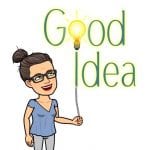 *16 September 2019 ETL504 addendum: See the template link on the left of the blog for initiating a collaborative inquiry unit with a classroom teacher Created by Christy Roe, based on suggestions from Carr, J. (Ed.), (2008) p.13-14; 28; 39; and Bishop, (2011) p.7.
*16 September 2019 ETL504 addendum: See the template link on the left of the blog for initiating a collaborative inquiry unit with a classroom teacher Created by Christy Roe, based on suggestions from Carr, J. (Ed.), (2008) p.13-14; 28; 39; and Bishop, (2011) p.7.
WHEW! Its a big task. I hope I’m up to the challenge!
References:
Bishop, K. (2011). Connecting libraries with classrooms. Retrieved from ProQuest Ebook Central.
Carr, J. (Ed.). (2008). Leadership for excellence: Insights of the national school library media program of the year award winners. Retrieved from iG Library.
OECD-UNICEF. (2016). What makes a school a learning organisation? A guide for policy makers, school leaders and teachers. Retrieved from https://www.oecd.org/education/school/school-learning-organisation.pdf
Be Smart! Copy Right! & Creative Commons!
[Reflections of ETL503 Module 4 Legal and Ethical Issues of Collections]
Thoughts that occurred to me while reading about Copyright laws, the SmartCopying assistance website and Creative Commons:
- The NSW Department of Education (DET) are said to ‘own’ the ‘intellectual property rights’ to my yearly teaching and learning program documents, which I have created either: at home or at school or at a training facility and either: off my own back or because of training the DET have provided for me. We must also attribute or reference items that we get from our schools (or the DET) or items ‘created as part of your duties’ because this applies to the Crown Copyright laws. But does this mean that the ‘crown’ own the material and that we must therefore leave a copy of our programs at the schools in which we’re employed (by the crown)? In my LGA, schools have interpreted these laws to mean that they must collect a printed version of my yearly teaching and learning program and store it on sight, because – in the view of the executives of the LGA schools – the DET ‘own’ the rights to the contents of my program. Do they really? Did I sign something giving over my copyright protection when I joined the DET as an employee? Are the executives in my LGA misinterpreting the DET’s policy on Copyright and infringing on my rights as the author of the program? Where then does this impact on me when I do my program completely electronically on the cloud, e.g. do the executives have the right to force me to print it or share it permanently with them electronically, so that they can store a copy indefinitely? Doesn’t this bring into issue the rule that copies of resources in my program cannot be stored indefinitely? This is, on the whole, a problematic policy…to which, I simply reply: “no. “
- While copyright infringement is obviously hard to police in the classroom, it can be easily monitored by online applications that search things like library catalogues for ‘pirated’ material. So, it might not be a good idea for schools to hoard digital/cloud collections of teacher’s work or programs, which might have been pirated?
- Programming is also becoming very collaborative. Some teams of teachers even share their program freely to the public on the Internet or on social networking platforms such as the string of FaceBook groups: ‘On Butterfly Wings English’ / Mathematics / Science / Creative Arts / etc. I understand that the work must be co-referenced if it was created collaboratively. However, if work is shared to the greater teaching community for use educationally, how is this to be referenced or does it have to be referenced according to Copyright law? Is it even legal to share it so broadly given that the employer presumably ‘owns’ the rights to the work?
- Teachers are not meant to be profiting from the work that they’ve created while employed with the DET. This is meant to stop teachers from ‘selling’ their programs or resources that they’ve either created or obtained for profit, as they ‘belong’ to the DET. Is this because of the Statutory Text and Artistic Licence Permit that the DET holds as teachers selling possibly copyrighted materials would null the DET’s yearly permit?
- Regarding the music that schools in my LGA generally upload from iTunes or YouTube for end of year concerts…these events are open to the public and as a performance of the music to the public, should we make sure we have Copyright permission – or is this covered by the Statutory Licenses? When I checked the DET website, I am still unclear if the yearly licences for playing films, TV or radio for non-educational purposes are paid for by the DET or the schools themselves.
- Is the Australian Copyright law’s lack of a requirement to register copyright and lack of requirement to list the copyright on a piece of work, the reason why copyright infringement is rife in Australian society? Would it be more rife if the laws were more strict? Who has more copyright infringement, the USA or Australia? How would we ever be able to research this and really know when it is usually an underground / blackmarket issue?
- Is lack of transparency or knowledge regarding the special licenses granted to schools enabling schools to teach students (inadvertently) that they, by default, don’t have to worry about Copyright?
- If all websites need to be accessible by people who have disabilities, (Flynn 2016) shouldn’t alternate modes of communication be mandatory based on the needs of the people in every school context? What about ‘bridging the gap’ for ATSI communities? How effective is a school with an entirely digital form of communication, when the majority of the community are illiterate or too poverty stricken to afford access to a computer or internet facilities? I am keen for Australia to take the lead in website accessibility as a social justice issue rather than waiting for Americans to pull their fingers out and make a change. An American by birth myself, I am horrified that their greatest solution to the injustice is to teach their students with disabilities to be advocates for change for themselves. While I appreciate that students should be taught to self-advocate, this is a bit of a ‘flick pass’ on behalf of educators who should be advocates for their students as well (IFLA 2012).
- This is a great PowerPoint for schools to use to help educate students (and teachers) on the use of Creative Commons: Creative Commons in the the classroom.
- Some important links that all TL need to keep bookmarked from SmartCopying.com (National Copyright Unit n.d.):
- ‘Educational Licences in Schools and TAFE’;
- Text Works & Fair Dealing/& ‘reasonable portion;
- ‘Playing Films, Television and Radio in Schools’/Film, Video/DVD /‘Playing films for non-educational purposes‘;
- Internet and Websites;
- Performing and Communicating Music in Schools;
- Copyright Implications of Content Management Systems: Schools;
- Assisting children with disabilities
References
Coates, J. (2013). Creative Commons in the the classroom. [slideshare]. Retrieved from http://www.slideshare.net/Jessicacoates/creative-commons-in-the-classroom-2013
Flynn, N. (2016, December 16). Australian web accessibility laws and policies. cielo 24. Retrieved from https://cielo24.com/2016/12/australian-web-accessibility-laws-and-policies/
Gibbs, J. (2014, January 26). 1. How copyright works [Video file]. Retrieved from https://youtu.be/WWIV8ZmFhvM
International Federation of Library Associations. (2012). IFLA code of ethics for librarians and other information workers. Retrieved from http://www.ifla.org/files/assets/faife/publications/IFLA%20Code%20of%20Ethics%20-%20Long_0.pdf
Palmer, Z. B., & Palmer, R. H. (2018). Legal and ethical implications of website accessibility. Business and Professional Communication Quarterly, 81(4), 399-420. Retrieved from https://journals-sagepub-com.ezproxy.csu.edu.au/doi/pdf/10.1177/2329490618802418
National Copyright Unit. (n.d.). Smartcopying. Retrieved from http://www.smartcopying.edu.au/
“This budget is too tight, could I try the next size up?”
(Reflection on ETL503 Module 3.1 Funding the Collection):
- “Should teacher librarians have the responsibility of submitting a budget proposal to fund the library collection to the school’s senior management and/or the school community? Or should such proposals come from a wider group such as a school library committee?
- Is it preferable that the funding for the school library collection be distributed to teachers and departments so they have the power to determine what will be added to the library collection?” (Giovenco 2019).
Well, here we go again. I thought when I got out of marketing (where I was given a budget amount and had to account for all expenditures within that budget) that I had seen the last of tight budgets. Tsk Tsk. Welcome to the world of being a Teacher Librarian!
- The responsibility for budgeting for the library is possibly best done collaboratively with the teacher librarian and the school executive and possibly the school’s P&C (who also have access to funds). As per the CSU Module (Giovenco 2019) a TL should be a budget collaborator, steward and thinker. Moreover, having never been in charge of creating a budget, I would be hesitant to take on a budget on my own and would be reliant on someone with expertise to help me.
- I have not mentioned classroom teachers intentionally. Should we collaborate with teachers about resources they might need? Yes of course. Should teachers have a say in the budget? Perhaps, yet I am leaning towards no. After all, why would teachers have a say in the budget for the library when they don’t have a say in any way what-so-ever in any other area of the budget? Teachers in some schools are given ‘classroom budgets’ and I think that spending that money is enough for them to worry about. Just do a Google search for ‘What should I spend my classroom budget on?’ and you will get 55,600,000 results. As soon as you ask for input, the assumption will be that what is asked for will be received and that is dangerous ground. Better to survey the teachers and ask what sort of resources they were thinking of or if they had any ideas and leave the budgeting to an executive committee that includes the TL.
In order to have a balanced (or at least one that fits) budget and a fully resourced curriculum I believe it is important to start with a clear policy in the Collection Development Plan.
There are loads of resources on how to do this (Such as Lamb & Johnson 2012, & Australian Library and Information Association (ALIA) Schools et al 2017, pp.20-25) and I intend to make good use of them!
 Good Idea: Let’s make sure that a ‘perfect fit’ or balanced budget remains the goal as opposed to being in surplus…we don’t want to behave like or be perceived as politicians do we? Well, speaking for myself, I certainly do not.
Good Idea: Let’s make sure that a ‘perfect fit’ or balanced budget remains the goal as opposed to being in surplus…we don’t want to behave like or be perceived as politicians do we? Well, speaking for myself, I certainly do not.
To show the ‘balance’ (or presumably the lack thereof) I most certainly agree to having a section for the library in the School Annual Report in the format suggested by the school or using a template such as the one below:
References
ALIA Schools & Victorian Catholic Teacher Librarians. (2017). Budgeting policies and procedures. In A manual for developing policies and procedures in Australian school library resource centres. Retrieved from https://www.alia.org.au/groups/alia-schools
Giovenco, G. (2019). Budgeting for a balanced collection. In ETL503: Module 3: Accession and Acquisition [Subject module]. Retrieved from Charles Sturt University website: https://interact2.csu.edu.au/webapps/blackboard/content/listContent.jsp?course_id=_42383_1&content_id=_2636378_1
Lamb, A. & Johnson, H.L. (2012). Program administration: Budget management. The School Library Media Specialist. Retrieved from http://eduscapes.com/sms/administration/budget.html
Censorship creates hackers, curation creates thinkers?
(Reflection on ETL503 Module 2.6)
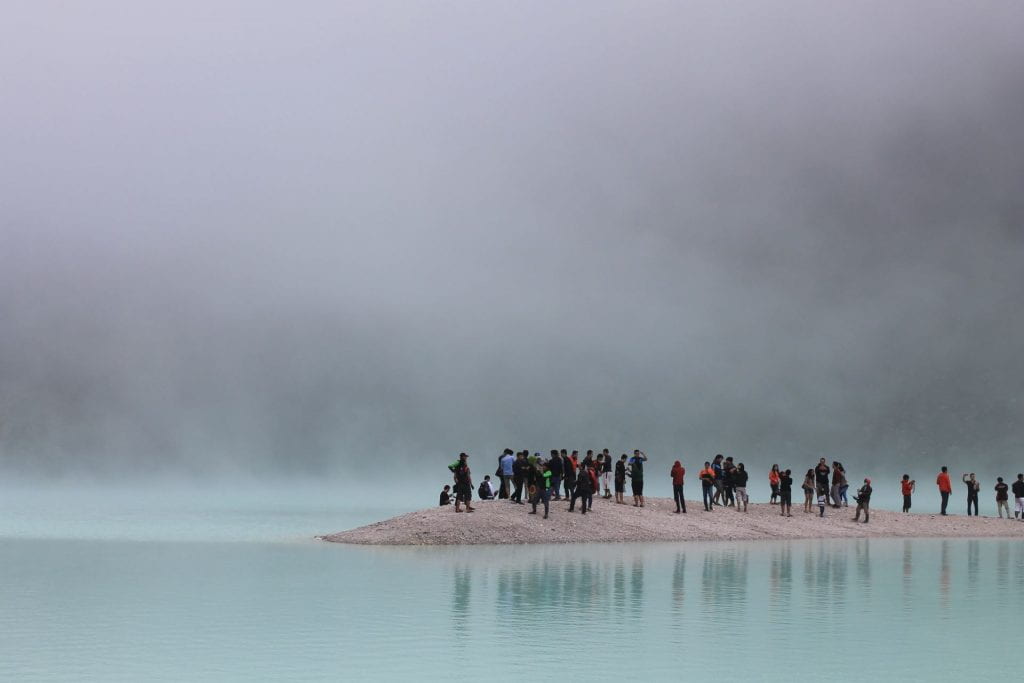 When I first started this course, my thoughts on information was that it was important to me that everyone have access to all information (Moody 2005), individual limitations such as disability, geography, financial capability/internet access not-withstanding, (as this is a more complex social justice set of issues). I believed information was not something that any person or corporation should own.
When I first started this course, my thoughts on information was that it was important to me that everyone have access to all information (Moody 2005), individual limitations such as disability, geography, financial capability/internet access not-withstanding, (as this is a more complex social justice set of issues). I believed information was not something that any person or corporation should own.
In that sense, I suppose I have the heart of a hacker. Not the sort of hacker who wants to steal a person’s private information in order to rob them, I’m not talking about being a person who commits cyber crime. I am more thinking along the lines of civil liberties and protesting the rise of stringent ‘intellectual property law.’ (Coleman 2012).
Thoughts: in fact, can anyone really own information? … Similarly to the indigenous community beliefs: Does anyone really ‘own’ land: Aren’t people simply custodians of information in varying degrees?
However, as I am studying the Teacher Librarian as information specialist role, I am fine-tuning my beliefs and perceptions. I can now see how curating and resource selection can benefit students (and society) by narrowing down the playing field to a more manageable and relevant space. I am understanding my own motivations better!
Censorship, a historically relevant concept, is motivated by either overt, covert (Moody 2005, pp.145) control, social engineering and seeking proof of weaknesses in information of a whole text – negating any strengths that the information might contain (Ashiem 1953, pp. 63).
Curation (aka resource or information ‘selection’) is motivated by democratically believing in an information seeker’s ability to think, providing others with the freedom to think and read, the freedom to value information within the context in which it was written despite any perceived ‘flaws’ within the minutia of the information (Ashiem 1953, pp. 63, & Lukenbill 2007 pp.28).
When pursuing the path of ‘selection’ of resources or ‘curation’ of resources, TL’s or school resource selectors must then demonstrate ongoing and diligent and consciousness of their (possibly overt or covert) bias and motivations as well as the (possibly overt or covert) bias and motivations of other stakeholders (including ‘community standards’ arguments which seek to take content out of context or limit the range of information available to information seekers, for the purpose of censorship) for selecting or de-selecting resources in order to ensure that they do not cross the line from curation into censorship (Jenkinson 2002 pp. 23, & Moody 2005, pp. 142).
Moreover, rather than be motivated to select or deselect resources based on ‘community standards’, TLs need to focus on providing a range of information and views (Moody 2005, pp. 143) as per Australian ‘industry standards’ such as those provided by ACARA, NESA or AITSL and appropriately curating the library collection to suit the curriculum and the point of need in our individual contexts (Moody 2005, pp. 146, & Lukenbill 2007 pp 26).
Furthermore, if the school library has a formal Collection Development Plan and / or procedure for resource selection/curation/censorship policy section or survey questionnaire for challenges or complaints, then it will offer some protection from external or internal bias and censorship (Jacobson 2016, & ALA 2016).
References
ALA (2016), “Challenge Support” Retrieved from http://www.ala.org/tools/challengesupport
Asheim, L. (1953). Not censorship but selection. Wilson Library Bulletin, 28, 63-67. Retrieved from: http://www.ala.org/advocacy/intfreedom/censorshipfirstamendmentissues/notcensorship
Coleman, E. G. (2012). Coding freedom: The ethics and aesthetics of hacking. Princeton University Press.
Jacobson, L. (2016). Unnatural selection. School Library Journal, 62(10), 20. Retrieved from https://search-proquest-com.ezproxy.csu.edu.au/docview/1825615756?accountid=10344
Jenkinson, D. (2002). Selection and censorship: It’s simple arithmetic. School libraries in Canada, 2(4), 22. Retrieved from http://ezproxy.csu.edu.au/login?url=http://search.ebscohost.com/login.aspx?direct=true&db=lih&AN=7277053&site=ehost-live
Lukenbill, W.B. (2007). Censorship: What do school library specialists really know? School Library Media Research, 10. Retrieved from http://www.ala.org/aasl/sites/ala.org.aasl/files/content/aaslpubsandjournals/slr/vol10/SLMR_Censorship_V10.pdf
(2005) Covert censorship in libraries: a discussion paper, The Australian Library Journal, 54:2, 138-147, DOI: 10.1080/00049670.2005.10721741
Fiction vs Non-Fiction – Want vs Need – Guilt vs Joy
[Reflection on ETL503 Module 2]
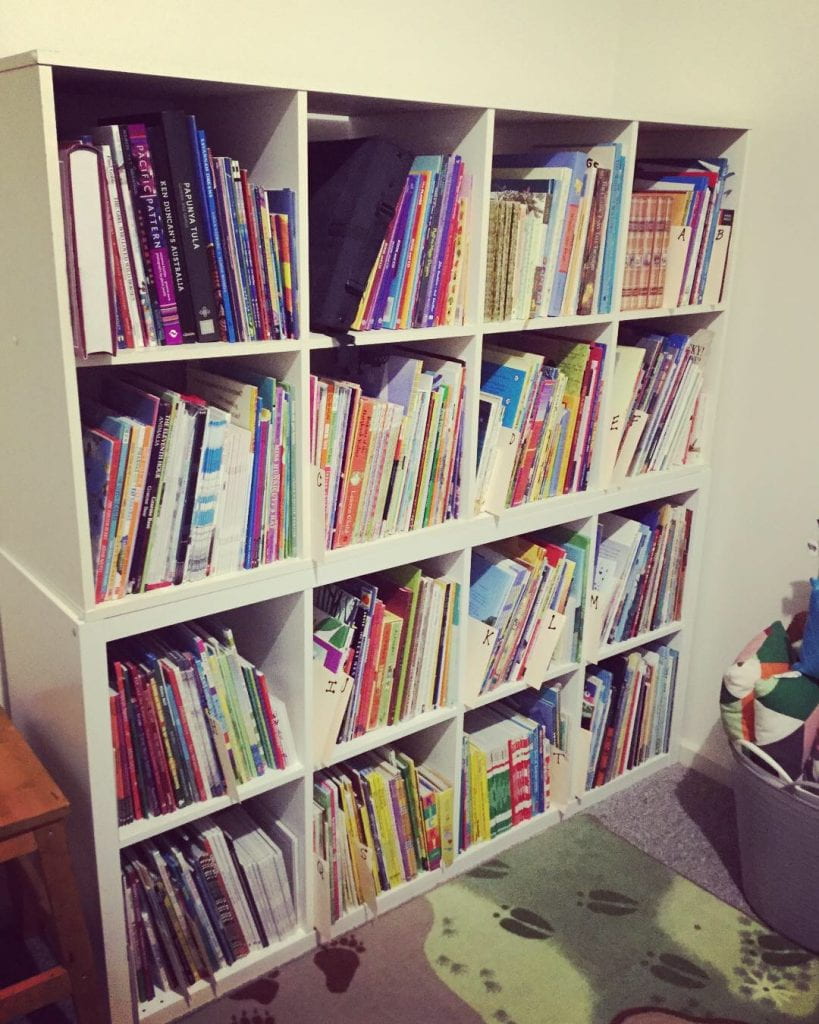
Recently I weeded (deselected) my personal library. (Most of the books in the attached images had lived their lives previously in either mine or my husband’s classrooms, which had to be packed up at the start of this year and put into storage as neither of us are ‘on class.’)
I had a box of romance novels from my late teens early 20’s and a collection of crime fiction from my early 20’s and 30’s that I thought I would want to keep forever but in fact, following moving house twice, they simply took up storage space. [IN FACT, fair disclosure: don’t be misled by how organised it looks now–the room pictured was previously a toy room and the books were in a different room packed floor to ceiling with boxes!]
In accordance with Marie Kondo’s (2019) KonMari method (originally a book, now a series on Netflix), many books did not ‘bring me joy.’ It was liberating to get rid of them–except for my collection of Sue Grafton mass market books, as her A-Z series hasn’t finished yet, let’s not get crazy! [Sidebar: Marie doesn’t say you have to get rid of any particular number of books. Relax.]
I decided to weed out some of our student fiction books. I kept some ‘classics’ and all books with matching CDs or automated reader capabilities (hugely popular). I kept all books by known authors and those that were part of a series (breaking a series or getting rid of a series hurts my heart – was I feeling guilted into keeping them? Possibly). But a lot of the books that I got in Scholastic book fair mixed author ‘packs’ or at Scholastic ‘box of books for $40’ warehouse sales got the axe with no regrets.
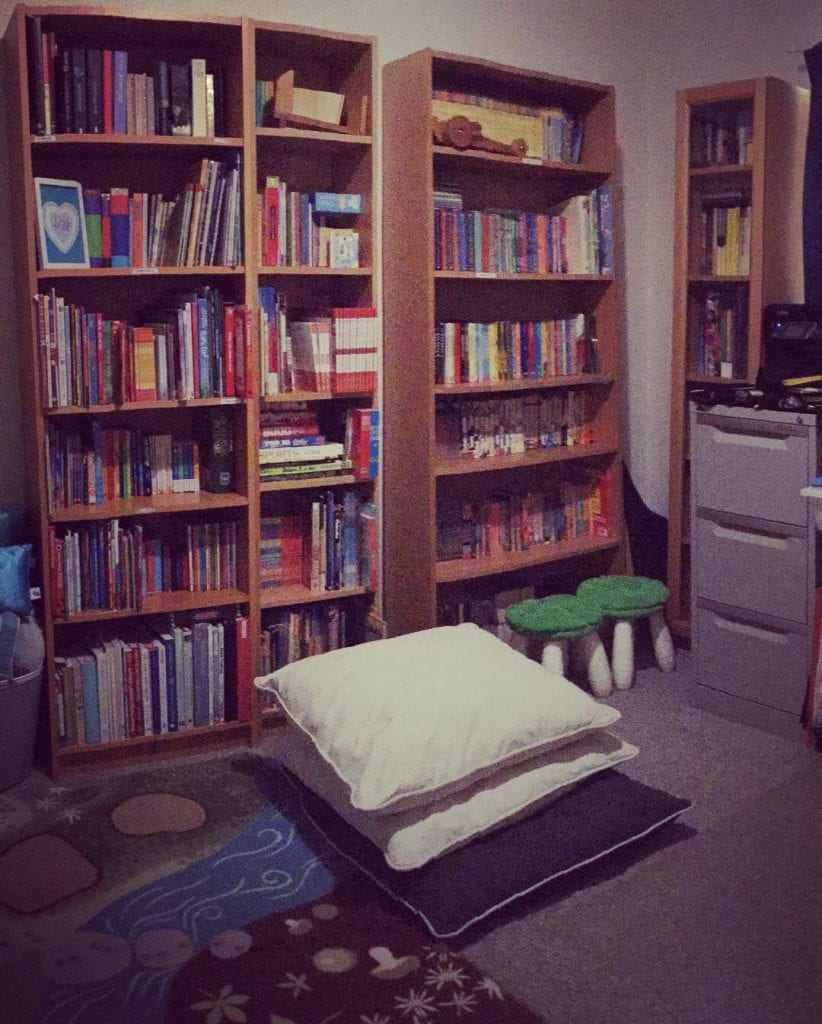
Asking myself, ‘does this book bring me joy?’ the main cull of books also came from my non-fiction shelves. My husband (also an educator) and I managed take about 10 boxes of books to Lifeline. Our reasoning: the information inside them was available online and a lot of the information in the books that we owned had gone out of date.
However, when we took the books to Lifeline, a parent from one of our local schools wanted all of them. In our area, most families are living below the poverty line and don’t have access to a lot of books and many don’t have a home computer. And, to be fair, these books have been read so often in our classrooms that they were falling to bits. The parent took them to the local ‘toy library’ facility where they will hopefully be loved and utilised as a means to teach young children initial literacy skills and surround them with literature.
So I’ve been reading the modules for ETL503 again and I’m asking myself now, which do students in our area need/want/prefer: Fiction or Non-fiction? What is the difference between a need vs want and does it really matter when resourcing the curriculum? Why do teachers (and TLs) keep resources, is it because of guilt or joy?
Fiction vs Non-fiction: Which one students prefer depends on the students themselves and what they are doing in any given point in time. To pit one type of text structure against the other is comparing apples and oranges. In my classrooms, students select non-fiction if they are only allowed a short amount of time for reading. If they are given more time, they select a trending fiction text. If they are new readers, they select storybooks we’ve studied in class (and invariably want to read them out loud to someone – preferably an adult!) If they are sharing a book with a friend, they go for the Joke books, Search and Finds, or books like the Guinness Book of World Records.
Sometimes, as students get older, they might think fiction books are for babies (or maybe they find them too romantic or disconnected from their lives –anyone tried to study Romeo & Juliet in high school? Was that fun for the majority of the boys in the class…?) and they might prefer non-fiction for a time. My husband and his younger sister profess to have never enjoyed reading fiction texts for pleasure, however, they have always enjoyed reading biographies or “non-fiction personal narratives” (Mosle, 2012).
In fact, the question of fiction vs non-fiction is the wrong question.
A better question would be: What is the library’s (and in fact, the school’s) main goals? What are students trying to achieve and what kind of resource would help them meet their personal and educational goals?
Are students reading for pleasure without an intentional or identifiable goal other than pleasure, and what do they identify as pleasurable–fact or fiction? Are students reading for obtaining information or skills that will enable them to achieve a particular goal or pursue a particular interest in their educational journey, and what will help them meet these goals–fact or fiction?
Need vs Want: Adults can be so presumptuous when deciding what children need vs want! Why does it have to be one or the other? Have you ever been in a school where they prohibit children from playing ‘shooting’ games using sticks or lego built ‘guns’? This is part of their ‘kinder culture’ and social development and isn’t indicative of future violence as adults (Alexander 2015). Have you ever worked in a setting where Barbie dolls weren’t allowed because of the presumed negative body image ideas that these dolls might encourage?
The lines between reality and imagination are very blurred for young children. There is, theoretically, no harm in this behaviour because adults have been using it to their advantage for centuries: by reading texts about fictional characters, children learn societal norms and preferred moral behaviours (Sekeres 2009). Children connect with fictional characters in a similar fashion to how they connect with real people and have a sub-culture that is entirely their own.
“Notions of childhood are more complex, more pathologized (sic) and more alien to adults who educate and parent” (Steinberg 2018, pp.2).
In this world of trying to ascertain what students at a given context NEED, it is important to recognise our own bias and preconceived notions before we acquire resources.
When looking at stages of development and trying to identify student NEED, we must not be fooled into thinking that these are a fixed, unchangeable means with which to view our students. When matched with an incongruent benchmark, students of today will be falsely judged as not ‘making the grade’ and could in turn have low expectations of themselves (Steinberg 2018). Students who believe they’ve ‘measured up’ to adult expectations may believe it due to their ability when in fact their success is more closely related to race and privilege (Steinberg 2018, pp.4).
Students can tell us what they WANT and that will simply have to take precedence over what we as educators think they NEED.
Once students have been asked and their voice has been heard, we can pursue our own agendas, as identified by Kimmel (2014):
“The school library collection serves the mission, goals, and objectives of the school, the school system, and the state. Our first consideration should be our learners— both present and future. The clientele of the school library and the curricula should inform identification of the ideal collection. Curricula, including local, state, and national standards, are important considerations. Identifying gaps also requires knowledge of the current collection. A needs assessment, therefore, develops a vision of the ideal collection needed to meet the needs of students and the mission of the school, and then measures this ideal against data about the current collection.” (Kimmel 2014, pp. 25).
Guilt vs Joy: Let’s not keep resources simply because we feel guilty getting rid of them. Let’s not be hoarders…has anyone else gone into a school library and thought: Does anyone actually read any of these old books? Why is this still here? What is that pile? What is in this filing cabinet? Why are there 10 old radios on this shelf? Do we even have computers that could read all of these floppy discs any more? I have been into a library like this, and it was traumatising.
We can’t keep things just because we think someone MIGHT need it in the future. We need to recognise what WILL be used in the future and what HAS been used in the recent past.
When weeding a collection, including equipment, Kimmel (pp. 67-68, 2014) recommends we ask ourselves and survey as required: In our school context and given our goals and curriculum needs, is (any particular resource): in good condition and / or appealing? Is it current? Is it relevant to stakeholders?
When I am a TL and/or next time I move house, I will continue to consider my collection as it relates to my learning in this course…possibly hanging on to those non-fiction texts a bit tighter. Until then, on to the next module!
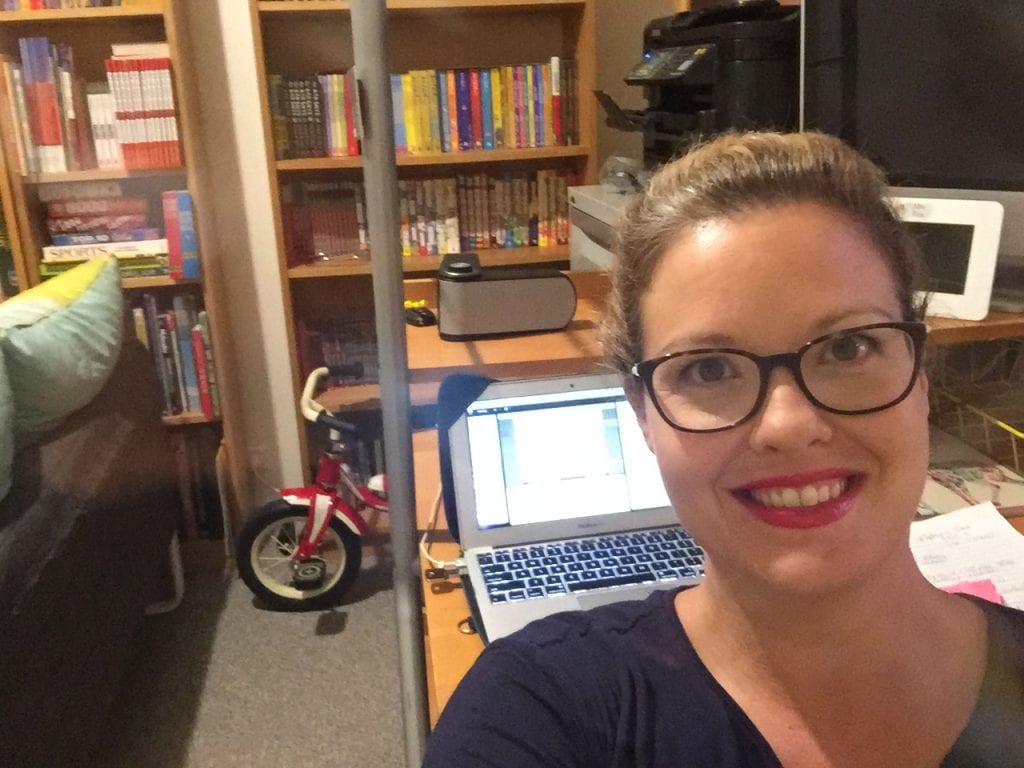
References
Alexander, S. (2015). Superheros and Weapon Plan for Fun and Learning. MyECE Experts. Retrieved from: https://www.myece.org.nz/activities-for-childhood-learning/254-superhero-play-weapon-gun
Kimmel, S. C.. (2014). Developing Collections to Empower Learners, American Library Association. Retrieved from: ProQuest Ebook Central, http://ebookcentral.proquest.com/lib/csuau/detail.action?docID=1687658.
Kondo, M. (2019) KonMari. Retrieved from: https://konmari.com/
National Library of NZ. (2014). Non-fiction. National Library of New Zealand Services to Schools. Retrieved from: https://web.archive.org/web/20160729150727/http://schools.natlib.govt.nz/creating-readers/genres-and-read-alouds/non-fiction
Mosle, S. (2012, November 22). What should children read? [Blog post]. Opinionator: The New York Times. Retrieved from: https://opinionator.blogs.nytimes.com/2012/11/22/what-should-children-read/?_r=0
Sekeres, D. C. (2009). The market child and branded fiction: A synergism of children’s literature, consumer culture, and new literacies. Reading Research Quarterly, 44(4), 399-414. Retrieved from: http://www.jstor.org.ezproxy.csu.edu.au/stable/25655466?seq=1#page_scan_tab_contents
Steinberg, S. R. (2018). Kinderculture : The corporate construction of childhood. Retrieved from https://ebookcentral.proquest.com
Why ‘Teach Starter’ Makes Me Cringe
[Reflection on ETL503 Module 2.2 The Balanced Collection]
Okay, I get it. I’m a fish out of water in my current local government area (LGA) of schools. As a (recent) day to day casual relief teacher, I am increasingly finding myself filling in for ‘New Scheme’ temps who are fresh from University. As a seasoned educator who has worked in upwards of 15 schools, over 12 years, in a variety of full time, part time, contract and casual positions, I should be be helping teachers who are starting out in the profession.
When I first started teaching, the more seasoned educators helped me too. They guided me on how to teach grammar when my generation was left behind in an era where grammar wasn’t explicitly taught. They gave me behaviour management ideas and resources for successfully delivering guided reading literacy groups. They came in to my class and taught lessons while I observed. They suggested training courses and organised my attendance. They gave me formats for planning and in some team situations, whole units of work complete with required resources already printed and ready to go. They did these things because they wanted me to succeed in the goal we all shared: improved student outcomes.
Now, in my current LGA context where the number of temporary teaching positions outweigh the number of permanent or seasoned teachers, sharing isn’t done willingly. Competition for positions is the number one game. As a casual (this year) I am happy to not be an active part of that. However, it still has an impact on me when I want to help but I’m seen as either a ‘substandard’ teacher filling in for more capable teachers or competition for contracts for next year. Or maybe people just don’t want to share because they are afraid of what I might say…
I say all of this because I am struggling to understand why the hell everyone here is so obsessed with using Teach Starter (2019) (https://www.teachstarter.com/) to program for their classes?
Teach Starter (2019), in my view is for that little gap in the unit of work where the resource is outdated or unavailable, for finding more diverse resources to differentiate a program, or perhaps for people who don’t know how to program or create or collaborate to create units of work or resources. It is for schools who don’t already have scope and sequence documents. In 2019, what schools don’t have programs, units of work or scope and sequence documents? I am utterly horrified.
And heaven help me if I, a mere casual, ask to see someone’s teaching and learning program. You’d think I’d asked to see the inside of their bedside table. Seriously, if you can’t stand behind your program proudly you need to lift your game.
Another issue that I have with Teach Starter (2019) is that it costs money to be a member and access the (very basic and ‘cutesy’) resources that any teacher worth their salt could whip up in five minutes.
Fine if the school have purchased it for the teachers to use based on collaboration and discussion with all stakeholders and the program fulfils a context need. Not fine if the teachers have to pay for access themselves. Not fine for casuals (like myself) who are left a sentence or two as a teaching and learning program for the day: e.g. “go into Teach Starter and teach the powerpoint on ‘communication-then and now.'” Oh my god, please kill me now.
Furthermore, just because the resources are digital, doesn’t mean the delivery isn’t the same as ‘chalk and talk.’ (For a resource to truly be a useful digital learning tool, it needs to offer more than just a digital version of a chalkboard!)
So let’s program effectively hey? Let’s start with the point of need for our individual students based on suggested syllabus outcomes, meet as a team to discuss a scope and sequence, share ideas and resources for the lessons and make sure those lessons meet the Quality Teaching Framework standards (Collins, 2017). Let’s ensure that the lessons can then be delivered effectively no matter what teacher turns up on the day, by making our programs easily accessible and truly collaborative.
If Teach Starter (2019) is a part of that, then so be it. So long as we keep in mind that programs full of resources and websites or applications full of resources shouldn’t be the only avenue that we use for programming.
In the meantime, I think we, Teachers and Teacher Librarians et al, need to get out of Teach Starter (2019) and stop starting at resources, and instead we need to start at the point of need for our students. Perhaps the only way for look for this to occur is to first get improved executive leadership skills in our LGA…or maybe fewer ‘New Schemers’…Now there’s an idea.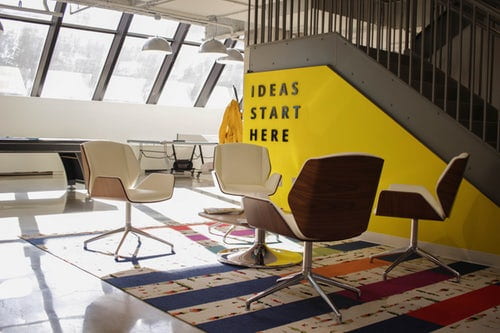
References
Collins, L. 2017, ‘Quality Teaching in Our Schools’, Scan, 36(4), pp. 29-33. Retrieved from: https://education.nsw.gov.au/teaching-and-learning/professional-learning/scan/past-issues/vol-36,-2017/quality-teaching-in-our-schools
Teach Starter (2019). Teach Starter Pty Ltd. Retrieved from: https://www.teachstarter.com/
Musings of an Apprentice Information Specialist
Following my ‘pass’ on my Discussion Essay (Assessment 2) for Introduction to Teacher Librarianship (ETL401) I had another look through the forum posts for Module 2 from my colleagues this week and I wrote notes of my thoughts as I went along:
INFORMATION: A school context must come to an agreed understanding to a definition of, opinions of, and methods for seeking and absorbing information. Thus, we will have a better understanding of what is an ‘information specialist’ or ‘information literacy’ or ‘information (insert word here)’.
MULTI-LITERACIES: Back in my UWS studies in 2003-2006, we didn’t learn much about how to implement Guided Reading groups using PM Readers (ugh, I despise this method of teaching anyway) but we did a fair amount of study around ‘multi-literacies’ (Lilly & Green 2004 p.99 & 118, Worthington & Carruthers 2003 p.12, Arthur 2001, & Barratt-Pugh & Rohl 2000 p. 198-201).
[Sidebar: In fact, in my NSW Department of Education (DET) job interview in 2006, I was asked how I would implement my English program and when I answered academically, with my knowledge of ‘multi-literacies,’ I failed the interview and was told to do another practicum in a primary school (although that was not officially a requirement of the DET) in order to ‘pass’ my interview and be granted a teacher number. The head of the panel, a high-school principal, was worried that I wouldn’t implement the traditional Australian primary school English content and would create a generation of illiterate students, I suppose. Thankfully, I did as she asked and got the job easily the second time around…interesting how ‘multi-literacies’ has come full circle in the form of ‘information literacy’ as well…but I digress.]
GOING GLOBAL: Information has become more global, as has our society, with the introduction of digital technologies and the ‘world wide web.’ This means that we, as Teachers and Teacher librarians must be more flexible with our students as global citizens, acknowledging and integrating: multiple languages, multiple cultural norms, multiple methods of information seeking, multiple methods of information absorption (aka ‘learning’), multiple learning styles (that change depending on an individual person’s context in any given moment in their lives) and multiple ability levels.
 Is information that is globally available, much like the fancy car that a rich family buy their inexperienced teenager, less valued? If it comes too easily will it get taken for granted and generally end in a car crash?
Is information that is globally available, much like the fancy car that a rich family buy their inexperienced teenager, less valued? If it comes too easily will it get taken for granted and generally end in a car crash?
SOCIAL MEDIA: The global network has also seen the creation of ‘social media’ and ‘wiki’ spaces. This impacts on people’s learning because, while social media is an excellent tool for engagement and delivery of information (linked to the research and marketing analytics done by corporations on how to reach target audiences–particularly children as per Veltri, et al 2016), social media is a weak platform in which to apply knowledge to every day reality. It is a sub-reality. A false replication of actual society with real, living and breathing humans and human interactions.
This is evident in any situation where someone makes an educated statement on a social media platform and is then hit with a barrage of abusive comments. People on social media platforms go on to social media platforms in order to be ‘social’–they aren’t there to be educated and aren’t open to absorb information, particularly if they have to work for it or if said information puts them out of their comfort zones and into a learning pit.
NAVEL GAZING: I wonder if the prevalence or demand for self expression on social media has been  born from the American talk show and self-help movement? Much like these movements who focus ‘in rather than out,’ (Murray 2015) could social media confuse the lines of what is a therapy tool, versus valuable information or accurately tested and researched knowledge?
born from the American talk show and self-help movement? Much like these movements who focus ‘in rather than out,’ (Murray 2015) could social media confuse the lines of what is a therapy tool, versus valuable information or accurately tested and researched knowledge?
ACADEMIC SOCIAL MEDIA: When we blend academia with social media, do we then, in turn, blur lines of authenticity for students? Why are some blogs academic and some mere musings? Is the blurring of academic information being part of the deep web versus readily available on the internet a clever way of engaging students in academia, embracing the method of delivery preferred by 21st century learners?
EASY TO FIND OVERLOAD VS RESTRICTED ACCESS DEEP WEB: Both are problematic. Historically, libraries have suffered the weight of hoarding and politicalisation of information. Encyclopaedia Britannica have a great topic page on their website (El-Abbadi 2019) about the Library of Alexandria which details how the Royal library and its ‘daughter’ library the Serapeum were destroyed by fire and war.
Great swaths of information have been destroyed in the past, and in today’s global information network, we are drowning in misinformation, irrelevant information, and less connection to information.
We are slightly more organised on the deep web, which is less susceptible to misinformation, but more likely to segregate and discriminate against users, particularly to society’s lower classes.
THE TL ROLE: In order to be valued as TL who are information specialists, we are the navigators and we need tools like telescopes, compasses and maps to help the ship navigate the ‘infosphere’ (Floridi 2007). We must safely navigate towards islands of internet information and cruise ships of social media. We must safely navigate below the water, helping the ship find and understand the underwater volcanoes and creatures of information.
TL’s need to:
- remember how to use digital technologies
- but to still keep in mind that using social media for work purposes is like working while on holiday, particularly for some teachers and teacher librarians who are suffering from stress or burnout, or who are trying to stabilise their work/life balance and
- we must strive to enable students to go through the stages of the Learning Cycle,
- use evidence-based practice,
- be aware of theories and pedagogies that we have been using as teachers, such as Multiple Intelligences and/or the Berry Street Educational Model (BSEM) for trauma informed practice or Quality Teaching Rounds, and
- work collaboratively with all stakeholders, much like the crew of a submarine!
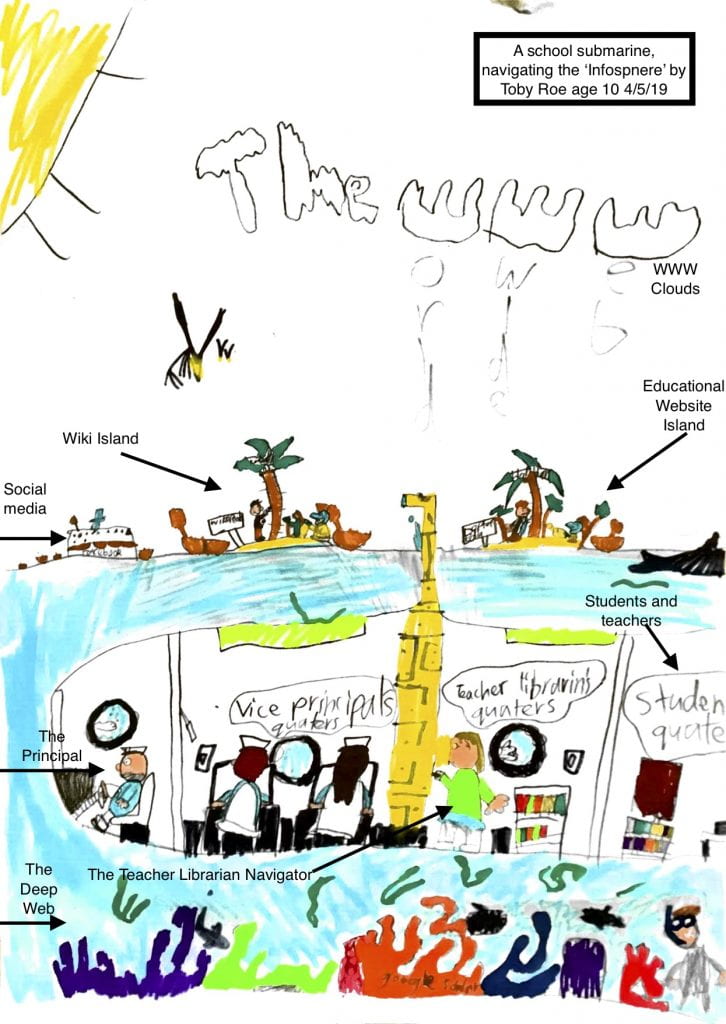
Teacher Librarians need to be the navigators of the (school) submarine. The principal and executives are the captain and first mates. The teachers are the crew and the kids, the families are the passengers. The submarine needs everyone to work together in order to be able to navigate the information sea above the water, including the political breezes and cultural water currents, the social media cruise ships and the various modes of information islands. It also needs to be able to safely navigate below the sea in the deep web with all of the volcanic deep web databases, applications and sea creatures that lurk about in the darkness.
References:
Arthur, L. Young children as critical consumers. Australian Journal of Language and Literacy. Oct 2001. v24. i3. p.182(14).
Barratt-Pugh, C. & Rohl, M. (2000). Literacy learning in the early years. Sydney: Allen & Unwin.
El-Abbadi, M. (2019). Encyclopaedia Brittanica. Retrieved from www.brittanica.com/topic/library-of-alexandria
Floridi, L. (2007). A look into the future impact of ICT on our lives. The Information Society, 23, 59-64. CSU Library.
Lilly, E. & Green, C. (2004). Linking Home and School Literacies. Developing partnerships with families through children’s literature. NJ: Pealson.
(2015) Notes to self: the visual culture of selfies in the age of social media. Consumption Markets & Culture, 18:6, 490-516, DOI: 10.1080/10253866.2015.1052967
Worthington, M. & Carruthers, E. (2003). Children’s Mathematics: Making Marks, Making Meaning. London: Paul Chapman Publishing.
Veltri, G. & Lupiáñez-Villanueva, F. & Gaskell, G. & Theben, A. & Folkvord, F. & Bonatti, L. & Bogliacino, F. & Fernández, L. & Codagnone, C. (2016). (Radboud University) Study on the impact of marketing through social media, online games and mobile applications on children’s behaviour. Published by Luxembourg: Publications Office of the European Union. DOI: 10.13140/RG.2.1.2576.7280.
What is my why?

I’ve always been someone who has to know. My mother used to mock me by saying ‘the nose knows’, implying that I was nosey and in everyone’s business. She wasn’t half wrong. I do love to know what is going on. I want to ‘know.’
Perhaps this is some part of being on the autism spectrum (both my kids are and through them I can see how I may be too), I was very introverted and observant as a child, sucking my thumb until age 11 (possibly to self sooth and to hide and not have to talk if I didn’t want to). I studied people and the world and did my best to learn all the rules so that I could stick to them.
I masked myself. I did what I thought my father or teachers wanted. I studied psychology. I never felt like I fit. Moving to Australia to marry my husband was the best thing I’ve ever done in my life. Here I fit better. With him I fit.
I tried several jobs and was successful at them. While studying to become a psychologist and working in retail, I heard: ‘You’re a natural salesperson. Could you train others?’ While working in a call centre but aiming to work in marketing, I heard: ‘You’re great on the phone, can we use your voice on the company auto answering service?.’ While working my way up in the marketing department, I heard: ‘You’re so organised, you should be an executive secretary.’ When I set up in a new school as a teacher, having taught for 6 or so years, I heard: ‘You have an eye for design in your classroom, you should be an interior designer.’
I can’t be cross at these comments. It must have been subconsciously evident that these jobs were not my why…although that last one still rankles…(I don’t want to be an effing interior designer, I’m a teacher and a damn good one thanks!) Obviously that school was not the right fit.
It is hard for me to find myself. It is hard for me to identify my why. But over all of these years I have been getting closer and closer to it.
I can measure my level of ‘finding my why’ success by my joy and sense of accomplishment inside myself. I can measure this also by how challenging I find it…truth be told, I am a good salesperson, I can (with practice) have a nice voice, I am very organised and I appreciate that spaces ‘speak.’ I am good at things but that doesn’t mean they are my ‘why’ or that they are the right fit.
I am all of these things and more: an artist, a mother, a wife, a sister, a daughter, a niece, an aunt, a gardener, a cousin, a friend, a beagle carer, a laugher, a reader, a writer, a learner and, possibly most of all, a teacher.
A lot of things are my ‘why,’ depending on who I’m with and the situation. But what stands true and challenges me–let’s not forget that being in our comfort zones is not being true to our ‘why– and what gives me the greatest sense of accomplishment is enabling the accomplishments of others. (AKA: teaching).
Teaching is my why.
Teaching is my why I didn’t quit when I had two children with additional needs. Teaching is my why I didn’t quit when I was told I didn’t have a contract two years in a row. Teaching is my why I am no longer working in sales, or marketing or at schools where I’m not valued.
I just have to change how my teaching job looks for me in this current climate of data collection and standardised testing…in this climate of casualisation and over abundance of principal power…in this climate of funding cuts and library closures.
I might not get a job as a teacher librarian. But I’ll be damned if anyone will stop me from becoming trained to be one. I love to know. I have to know what’s going on. I want to be a teacher librarian.
Trust me on this, the nose knows.
Are School Librarians an Endangered Species?
(Reflection of ETL401 Module 3.1-3.2)
100 words (actually, I’ve highlighted 65) that summarise the amazing and encouraging ‘Profession at the tipping point (2015) and the keynote speech from the ASLA 2011 Conference, by Karen Bonanno Keynote Speaker ‘A Profession at the Tipping point: Time to Change the Game Plan’:
Due to a Federated Educational Structure, new push for ICT qualifications and other ‘tipping points‘, we are fighting for our jobs and have to prove why we are relevant. (Otherwise we run the risk of becoming endangered).
To do so we must:
Look at our situations as ‘glass half full’.
‘Let our rhetoric resonate with our audience.’
‘Begin with the end in mind’
Use the ‘5 Finger Plan to Success (Pre-imminence, Focus, Brand, Circle of influence; and surmise the little things we do that count)
We need to use slow seduction rather than expect a seismic shift, aiming for 1% improvement over time, building relationships as we go along every day in our schools, communities and professional networks. And we should be striving for the AITSL Highly Accomplished or Lead Teacher Qualifications.
References:
Bonanno , K. (2015). A profession at the tipping point (revisited). Access, March, 14-21
Beautiful Doesn’t Mean New

(Reflection on ETL503 Resourcing the Curriculum Module 2)
When ‘resourcing the curriculum,’ as a teacher librarian I will need to remember lots of information as mentioned in the module. I will also need to remember two things:
- Beautiful doesn’t always mean new, (see image) and
- Sometimes patron/student needs outweigh their wants. (*See below)
1. New things aren’t always the best things. My grandmother’s recipe for chicken and dumplings far outweighs any new dishes that my mother or my aunts dreamt up for our yearly Thanksgiving or Christmas feasts. Old buildings using engineers, fine brickwork, stone masonry or intricate carpentry far outweigh cardboard or plastic construction-particularly in times of natural disasters like earthquakes.
Should digital resources replace physical resources? If new is perceived as better, then will Artificial Intelligence replace teachers? Guilherme (2019) goes into this with a powerful depth. We are facilitators, but we are also teachers. We are providers of information but we also teach the skills to interpret the information and utilise it in life.
2. A key factor in ‘resourcing the curriculum’ is that it reinforces the concept of ‘information as a commodity.’ As much as we’d like libraries and information to be free, the fact is that neither are without cost. (Whether that cost is paid by taxes or individuals is a political debate for another day.)
In terms of ‘information as a commodity,’ this has some powerful landmines. The idea that information can have ownership has led to a strong community of hackers whose primary function is to provide information that someone or a corporation has deemed ‘a commodity’ and opportunity for profit.
For librarians, ‘information as a commodity’ is also full of landmines. We are adults, we are educated, we have a job to facilitate the education of students. We are also, gendered, cultural, geographical, and loaded with our own personal string of internal bias.
*Does the student voice of their needs or wants, outweigh what society (and the teacher librarian) view as student needs or wants or vice versa?
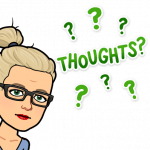 I would like to review my personal bias and society’s bias towards the voices and contexts of students as discussed in Shirley Steinberg’s most recently edited book: Kinderculture (2018)
I would like to review my personal bias and society’s bias towards the voices and contexts of students as discussed in Shirley Steinberg’s most recently edited book: Kinderculture (2018)
I am having a lot of colliding thoughts about ‘engaging learners’ and fulfilling ‘needs’ of the learners &/or the school community and ‘who has the final say’ in resourcing the curriculum.
I say colliding because I have taught at so many different schools (South West Sydney, Far West, casually and through temporary engagement, RFF, classroom teaching, job share, etc) and can see a common lack of consideration for sociocultural context of students for programming and planning. If programming and planning were a building, the foundation is the sociocultural context. Without a sound knowledge of the school’s foundation, the building / educational program will crumble and resourcing the curriculum becomes moot. The library starts to fail or becomes irrelevant. The funding decreases. The principal sees no point in allocating a qualified TL. People start throwing around the idea of getting rid of a library altogether. In the distance: sirens.
Yesterday I worked at a geographically isolated and drought affected primary school with a large number of students from very low SES, high evidence of trauma (large ATSI population, witnesses of or suffers of domestic violence, neglect, alcohol / drug / physical / mental / emotional abuse / deaths in the family), higher than state average numbers of students with diagnosed and undiagnosed disabilities (including lead affected disabilities due to historical mining practises) and the students in this area are, overall, not meeting state expectations based on NAPLAN results. In my area, there are a statistically higher numbers of these things in all of the schools but in this particular school, the statistics are more visible.
As a result, most of the students are coming to school to feel or express love. (See Maslow’s Hierarchy of Needs as explained by McCloud, 2018 in the reference list below). They have some basic human needs that are not being met at home and they come to school to have these needs met.
However, the main push from the teacher of the class I was on yesterday, was to teach content that was not adjusted to meet the needs of the students as individuals. It was straight from the stage based syllabus and so difficult that the students were not just disengaged but were actively protesting and having meltdowns before my eyes. When I suggested deviating from the plan, everyone agreed and calm was restored.
Too often in today’s educational realm, the needs of students are filled with a top-down mentality. Schools start at what the administration identify as a need-based on Australian or state benchmarks and societal goals (eg. NAPLAN, national curriculum or state syllabus documents). They then look to the local administrators to identify needs, such as recent literacy or numeracy training or strategies (eg. L3 or TEN). Then the teachers weigh in (eg. Sport or Creative art or Social-Emotional-Learning – which may or may not be sourced from evidence based practises). Parents and families sometimes get to have a say – and it is interesting to note the capability of the families to engage with the form of communication method chosen by the school as often low SES families cannot get to meetings and cannot access digital forms of communication or are too illiterate themselves to fill in a form – (eg. ‘I want my child to learn how to do public speaking so they can become a prefect or school captain’). Then, almost as an addendum, a little box is put out in the library to gather the student’s identified needs or wants (a system designed to preference students with high enough literacy skills and levels of engagement already to participate).
I prefer to value the student’s needs first – identified by them, identified through a authentic TL relationship with the students, and identified by a thorough a collaborative study of the socio-cultural context (Farmer, et al 2018) of the school. The library and classrooms in the example of the school where I worked yesterday, need to focus on being places for students to have voice and to feel loved and express love. The school needs to be a safe shelter and offer warmth and basic physical comfort. It needs to have a teacher librarian who is acutely aware of the ‘kinder culture’ (Steinberg, 2018) of students in the school and resources the library to embrace the ‘kinder culture’-which is the main key to engagement, particularly with students from low SES, high disability or who’ve been traumatised.
Once these areas have become the main priority for resourcing the curriculum and are working well, and the students are engaged, then the questions can be asked of parents and carers and the community of what they identify as ‘needs.’ Teachers can also weigh in, followed by the local teaching community and administrations. Finally, a little box can be put out for the state and federal needs so that they can have their say.
References:
Farmer, S., Dockett, S., & Arthur, L. (2014). Programming and planning in early childhood settings. Chapter 6. Retrieved from https://ebookcentral.proquest.com
Guilherme, A. AI and education: the importance of teacher and student relations. AI & Soc. (2019) 34: 47. Retrieved from: https://doi-org.ezproxy.csu.edu.au/10.1007/s00146-017-0693-8
McCloud, S. (2018). Maslow’s Hierarchy of Needs. Retrieved from: https://www.simplypsychology.org/maslow.html
Steinberg, R.S. (2018). Kinderculture : The corporate construction of childhood. Retrieved from https://ebookcentral.proquest.com
Demand Driven Acquisition – Selection in the School Context
(Reflection of ETL503 Module 2.1)
In my previous blog post for this module, I pointed out the importance of a clear philosophy (or philosophies) and clear outline of the school’s context or Situational Analysis (Arthur, et. al, 2015) as they relate to the acquisition of resources.
In this blog post, I will discuss the concept of ‘Demand Driven Acquisition’ (England & Anderson, 2019).
First, what is demand or as it is often referred: supply and demand? This is a key factor in economic theory and is defined by The Editors of Encyclopaedia Brittanica (2018) as:
“Supply and demand, in economics, (it is the) relationship between the quantity of a commodity that producers wish to sell at various prices and the quantity that consumers wish to buy. It is the main model of price determination used in economic theory. The price of a commodity is determined by the interaction of supply and demand in a market. The resulting price is referred to as the equilibrium price and represents an agreement between producers and consumers of the good. In equilibrium the quantity of a good supplied by producers equals the quantity demanded by consumers.” (“Supply and Demand,” 2018, para. 1).
As pointed out in ETL401 module 2.1, information is slightly different to consumables, having properties which distinguish it from other traded goods. [Information, unlike traded goods, is not consumable, not transferable, nor indivisible]. Our goal however, as teacher librarians with information resources, is similar to the market goal which is:  equilibrium between the supply of resources and the quantity (or one might argue, quality or even type) needed or demanded by the school community.
equilibrium between the supply of resources and the quantity (or one might argue, quality or even type) needed or demanded by the school community.
So how do we as teacher librarians reach a supply and demand market equilibrium in terms of school library collections?
As exists in economics, we must collect data to determine if there is an over/under supply or an over/under demand.
One way to collect data is to run diagnostic reports of the collection – including such things as regularity of use by patrons, age of resources, duplication of resources, quantities of types of resources, etc.
Another way to collect data is to start asking questions of ourselves and the school community regarding our ‘needs’ for resources or types of resources and our individual goals or desires and collating the responses.
 Now I need to find the time to research how to ask the school community the right questions and look into a variety of survey methods for obtaining the most authentic responses and how to analyse the data to make informed decisions about resource acquisition!
Now I need to find the time to research how to ask the school community the right questions and look into a variety of survey methods for obtaining the most authentic responses and how to analyse the data to make informed decisions about resource acquisition!
References:
Arthur, L, Beecher, B, Death, E., Dockett, S, & Farmer, S. (2015) Programming and Planning in Early Childhood Settings 6th Edition. Cengage Learning Australia Pty Ltd. South Melbourne, VIC.
Supply and Demand. (2018). In Encyclopaedia Britannica online. Retrieved from: https://www.britannica.com/topic/supply-and-demand
England, M. M., & Anderson, R. (2019). Demand-driven acquisition of print books: Applying 21st-century procurement strategies to a 5th-century format. Collection Management, 1-10. doi: 10.1080/01462679.2018.1564715
Resource Selection Decision Making Model
(This reflection follows my readings within ETL503 Module 2)
While resource selection for teacher librarians is complex, I think it is important to vet resources based on agreed quality teaching practises across the whole teaching community and not just library collections.
Appropriate resource selection is something that will assist with ‘external validation’ from NESA, school plan formation and the NSW Department of Education ‘School Excellence Framework’ (2014) (found in NSW Department of Education (2019) Teaching and Learning).
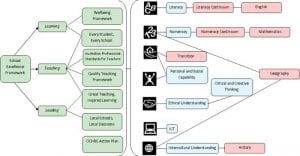
For this reason and with suggestions from Hughes-Hassell & Mancall (2005) and the NSW Department of Education (2019), I have created a (Draft) GoogleForms questionnaire, that offers an array of resource selection decision making criteria. The questionnaire has been designed for any stakeholder to be able to answer the questions, however they may need librarian guidance for some questions such as context and philosophy. To have a look at my draft selection questionnaire, click here.
However, as noted by Hughes-Hassell & Mancall (2005) we must know the context of the school and teaching and learning philosophies of stakeholders prior to validating a resource.
While at UWS in 2006, I created a survey for families to help me identify each student’s context. For schools, this should be something created collaboratively and using information from my UWS studies, I have also created a (Draft) GoogleForms questionnaire to help schools identify their context. To have a look at my draft context questionnaire, click here.
I want to improve the context survey by reviewing a key text from my Bachelor  of Education studies at UWS. I must read the updated version (which has a massive quote from me-WOW, I’m famous!) Chapter 6 on the creation of a Situational Analysis: Farmer, Sue, et al. Programming and Planning in Early Childhood Settings, Cengage Learning Australia, (2014). ProQuest Ebook Central, http://ebookcentral.proquest.com/lib/csuau/detail.action?docID=1990997
of Education studies at UWS. I must read the updated version (which has a massive quote from me-WOW, I’m famous!) Chapter 6 on the creation of a Situational Analysis: Farmer, Sue, et al. Programming and Planning in Early Childhood Settings, Cengage Learning Australia, (2014). ProQuest Ebook Central, http://ebookcentral.proquest.com/lib/csuau/detail.action?docID=1990997
Another example of guidance might be in identifying teaching and learning philosophies. While at UWS in 2006, I realised this was an area of weakness in the degree and in teachers in general and I created a template for thinking about the various aspects of teaching and learning in order to arrive at a coherent and well-thought out philosophy, based on Posner’s (1996 & 2005) Field Experience: Methods of reflective teaching. To have a look at my draft philosophy questionnaire, click here.
References:
Hughes-Hassell, S. & Mancall, J. (2005). Collection management for youth: responding to the needs of learners [ALA Editions version]. Retrieved from http://ebookcentral.proquest.com.ezproxy.csu.edu.au/lib/csuau/detail.action?docID=289075
Posner, G. J. (1996). Field Experience: Methods of reflective teaching (4th ed.). New York: Longman. (p. 131-134);
Posner, G. J. (2005). Field Experience: a guide to reflective teaching. 6th ed. Boston: Pearson Education Inc.
Prumm, K. & Patruno, R. (2016) Elements of Learning and Achievement Manual – NSW Department of Education. Retrieved from: https://theelements.schools.nsw.gov.au/introduction-to-the-elements.html
NSW Department of Education (2019) Teaching and Learning. Retrieved from: https://education.nsw.gov.au/teaching-and-learning]
Being Part of an Information Society
(Reflections of Introduction to Teacher Librarianship Module 2.3)
Knowledge is power. While I most definitely believe that I will become a librarian at some point I will always be a teacher and this amalgamation of ‘teacher librarian’ means that I am a facilitator of education. This is a key component of my teaching philosophy.
I am most disturbed by the concept of inequality and injustice and as such, I am uncomfortable with the idea that information is, as discussed by WebFinance, 2016, in Module 2.3:
“the (1) pervasive influence of IT on home, work, and recreational aspects of the individuals daily routine, (2) stratification into new classes those who are information-rich and those who are information-poor, (3) loosening of the nation state’s hold on the lives of individuals and the rise of highly sophisticated criminals who can steal identities and vast sums of money through information related (cyber) crime (WebFinance, 2016).”
The growth of technology in our lives has created, in some ways, more questions than answers:
- Why is technology so pervasive? (How do I get my husband to put the phone down and look at me when I am speaking to him???)
- What can we do to stop it from creating a new class system or intensifying the status quo? (Particularly given the first question which makes me want to go live in the Amazon and leave technology behind. And if I didn’t have technology who is to say that I would be disadvantaged? Would my life have greater quality rather than quantity?)
- Does it really ‘loosen the nation’s hold’ on our lives? (Is it a bad thing that ‘the nation’ hasn’t got a ‘hold’ on ‘us?’ Who is it exactly that has a hold on ‘us’? Governments? Special Interest Groups? Corporations? Computers?)
- Why does it increase the occurrence of identity and other theft? (Why are people so horrible to each other on the digital sphere?)
Proposed questions (and my answers) from Module 2.3:
“Who or what is driving technological change–Is it the inhabitants of the landscape or the technology?”
I believe the drive for change and continued growth of technological advances has to do with the people and the pursuit of democracy (Coccia 2010) as well as the economy (mainly capitalism as noted by Schiller in Webster 2014, p. 149) and competition between countries-most notably in the ‘space race’ and the Cold War (Godwin, 2006).
I also think the need of all humans is to improve the world in which we live, even if it is a small way, is an important factor towards careers that drive change, be they careers that drive technological change or societal injustice change or both.
This need to be of value to the world is a key factor of a Japanese concept called Ikigai (Garcia & Miralles, 2017) which is a principle of life that can exist without being consciously aware that it exists.
Does technology itself drives the agenda (and rate of change) or is society in control?
I hope we are still in control but I honestly could not say for certain and perhaps that, in itself, should be cause for alarm.
Should teacher librarians be considered part of the ‘Information Society’?
As I said at the start of this post, I am (or will be soon) a teacher librarian. My skills as a teacher–as a Quality Teaching Framework trained, NESA Proficient (and maintained) Teacher is not negated by the need to ensure that information is made available to the students and school in which I teach.
My teaching philosophy may grow and change and I may be part of an information society–but one thing will always remain: Teachers are facilitators of education (more than an transmitters) of information.
References:
Coccia, Mario. (2010). Democratization is the driving force for technological and economic change. Technological Forecasting and Social Change. Retrieved from: https://www.researchgate.net/publication/248497849_Democratization_is_the_driving_force_for_technological_and_economic_change
Garcia, H. & Miralles, F. (2017) Ikigai: The Japanese Secret to a Long and Happy Life. London: UK. Hutchinson.
Godwin, M. (2006) The Cold War and the Early Space Race. Retrieved from: https://www.history.ac.uk/ihr/Focus/cold/articles/godwin.html
Web Finance Inc. (2016). Information Society. Retrieved from Introduction to Teacher Librarianship Module 2.3: https://interact2.csu.edu.au/webapps/blackboard/content/listContent.jsp?course_id=_42380_1&content_id=_2633951_1&mode=view
Information and the digital age – Positives and Negatives
(Reflection of Module 2.2 Introduction to Teacher Librarianship)
Western society has easy access to information. It might not always be up to date or relevant to our individual contexts but it is available.
5 positives of the digital age:
- It is faster than doing research using a library or non-fiction text that has been purchased.
- Levels the playing field to some degree for economically disadvantaged communities.
- Levels the playing field to some degree for geographically disadvantaged communities.
- More people have a venue for having a ‘voice.’
- Creates an avenue for collaboration that was not there previously.
4 negatives of the digital age:
- Relies on the assumption that the entire world are having equal input when that is not true.
- Opens the gate to misinformation (eg. propaganda) to reach a larger audience for the sake of another’s personal gain.
- It takes a lot of time to weed out the stuff we don’t want or need to see (this having previously been done by editors and publishers or researchers in their fields). [Search engines try to help with this by programs where ‘the tool directs the user’. These algorithms try to guess what you-the user-want to see. However, this places inhuman limitations on the information that we seek and can often miss the mark. The intelligence is artificial and cannot offer clarification the way that a human can].
- People (eg. teachers) will most often see only the good things that others (in their profession) put on the internet and not the reality.
References:
Case, D. (2006). The concept of information. In Looking for information: A survey of research on information seeking, needs and behaviour, pp. 40-65 (Chapter 3). 2nd ed. Burlingham: Emerald Group Publishing Ltd. ebook, CSU Library.
Floridi, L. (2007). A look into the future impact of ICT on our lives. The Information Society, 23, 59-64. CSU Library.
What is Information?
 Following the readings for Introduction to Teacher Librarianship Module 2.1 (2019) regarding the ‘Information hierarchy’ it occurs to me that the information sequence suggested could be described or represented as a 2D spiral as occurs in mathematics and a 3D helix, as occurs naturally in nature.
Following the readings for Introduction to Teacher Librarianship Module 2.1 (2019) regarding the ‘Information hierarchy’ it occurs to me that the information sequence suggested could be described or represented as a 2D spiral as occurs in mathematics and a 3D helix, as occurs naturally in nature.
[Sidebar: For more information on the Fibonacci Sequence, and how to teach the idea to students here: https://www.mathsisfun.com/numbers/fibonacci-sequence.html]
When discussing powerful words such as, ‘data, knowledge, wisdom, intelligence, instructions, and messages’, I agree with Module 2.1, that information is a complex idea that is often subjective and correlational.
I think of information in ‘classical’ terms, and related to physical entities such as energy and matter, and agree with the idea that there is a ‘data-information-knowledge-wisdom continuum’ (AEW, 2008). While we live in modern times, there is still value in ‘classical’ information, knowledge and wisdom.
My idea of an information ‘continuum’ is that, instead of a linear model, if you picture the shell image above as a person’s mind, each line represents a continuing time sequence of learning: data (D), information (I), knowledge (K) and wisdom (W) regarding a topic or train of thought. Some lines (building, much like DNA in their repeating DIKW sequence) are weak and so light (‘misinformation’) that they cannot replicate the sequence and fade away. Every shell is unique, although there are commonalities, as is found in humans.
[Sidebar: The four inherent junctions or properties of DNA can be further researched here: https://www.ncbi.nlm.nih.gov/pmc/articles/PMC4537162/]
I like the idea from Module 2.1 that states: “information creates more information” as this supports my helix view of information.
However I believe that the “self-multiplication” of information as mentioned in Module 2.1 generally only causes an overload when one cannot release an old idea or old information in favour of the new or when a person’s capability to research information highways is limited.
Further thoughts about information:
- Can the DIKW sequence be varied in itself, just as DNA is varied, eg, WDKI?
- Is the Information hierarchy or continuum more of a triple helix representing the individual, group and societal knowledge, rather than a helix as represented in the shell image above?
References:
AEW. (2008). Community of practice: Part B. The Information Hierarchy.[slideshare] Retrieved from: Introduction to Teacher Librarianship Module 2.1 (2019) https://interact2.csu.edu.au/webapps/blackboard/content/listContent.jsp?course_id=_42380_1&content_id=_2633951_1&mode=view
Introduction to Teacher Librarianship Module 2.1 (2019) https://interact2.csu.edu.au/webapps/blackboard/content/listContent.jsp?course_id=_42380_1&content_id=_2633951_1&mode=view
Math is Fun (2016). Fibonacci Sequence. Retrieved from: https://www.mathsisfun.com/numbers/fibonacci-sequence.html
National Center for Biotechnology Information, U.S. National Library of Medicine (2015). The Inherent Properties of DNA Four-way Junctions. Retrieved from: https://www.ncbi.nlm.nih.gov/pmc/articles/PMC4537162/
The Impact of a Digital Landscape on School Library Collections
[ETL503 Module 1 Reflection]
QUESTION: In today’s world of digital content and Internet accessible information, are books (and the libraries that hold them) still necessary?
Libraries versus the Internet
We simply have to stop and take a look at the people around us to notice we live in a digital age. Have you ever been in an office when the Internet goes down? People wonder around like zombies, having cups of tea or coffee that they don’t want, sparking inane conversations and shuffling papers that have sat in a pile for months untouched, in favour of working online.
However, when it comes to reading for pleasure, obtain metacognition or study for a degree, which resource is more preferred – a library and written text or the Internet?
According to research by Naomi S. Baron (Schaub, 2016) 92% of College Students prefer paper resources, saying that paper resources offer fewer distractions, less headaches and eyestrain, a pleasant smell and a sense of resolution at the end of every page.
Furthermore, a Teen Reading study funded by Deakin and Murdoch Universities in Australia (Copyright, 2017) found that most teens prefer (fiction) print books because of the sensory benefits such as the feel of the pages, the smell of books and the way books look when presented on a shelf or display. They also said they thought books were better priced, had an ease of access, required very little digital skill and were not limited by technology access or Wi-Fi connectivity.
Book Publishing Today – Using your eyes versus using your ears
The following is a quote from my Forum post (Roe, 2019),
“Shatzkin (2016) discusses the history of book publishing and I used to work in a small bookstore in the 1990’s called WaldenBooks (owned by the Walden company mentioned by Shatzkin). I remember that Borders in my town, which was this giant bookstore, bought it out but that I felt it was pretty but overwhelming in size. The staff did not have a connection to the books, rather a connection to the cash register in the centre. Specialist staff were employed to assist customers in their searches.”
It had so many levels and so many books! The human element was vastly underwhelming. I went in one day to see a friend who had transferred over to Borders after the takeover. She was an interesting lady with a very kind heart. Let’s call her M. She lived with her mother and seemed happy at Borders, with better pay, and more support. I sometimes got letters from her from her travels as a park ranger in Alaska (her ‘other job.’) I did tell you she was interesting!
At Waldenbooks M had spent most of her time unpacking boxes of books received from publishers and acquisition them into the floor stock. She’d load these books onto shelves and I’d have the joyous task of shelving them into the stacks for customers in between running the cash register or finding special orders and contacting customers to let them know their books had arrived.
Once she had gotten the books out of the storeroom and the boxes cut up and put outside, she could sit and read in the back room to her heart’s content, unless our crazy boss made her come out and run the desk, which she hated.
With the closure of Borders, where did M go I wonder? Is she working for Barnes and Noble now? Did her mother die and leave her the house? Is she alone? What is the human cost of e-books?
Note to self: Find M!
As I said in my 2019 forum post: “Referring back to Shatzkin (2016), it is interesting how the internet has changed the purchasing of books, in terms of how to stock a school collection. In the past someone go down to the bookstore and get the newest books. Now, I suppose, they all have to be ordered over the Internet through, as Shatzkin calls them, ‘the 4 horsemen.’”
(Furthermore, I continued to write in the Roe 2019 forum post)
“Shatzkin (2018) discusses audio books or ‘books to be heard.’ I don’t like audio books because I am a visual learner and words that are only spoken are often distracting for me. I get lost in my own thoughts and suddenly ‘wake up’ to the fact that several minutes have passed and I was not listening. I know there are students out there with auditory processing disabilities and students who benefit from things being read out loud. I think therefore the resources need to have a balance and be stocked based on the requirements of the people that will be using them. This is much like the recent research that says students learn better from written notes versus digital notes, which is discussed on National Public Radio with James Doubek (2016).”
Similarly, I recently purchased an online text only because that was the only way I could access it and it took me a very long time to get through it even though it was not an audio text. I didn’t feel like I needed to really read all of the content, like I only needed to skim it—much like we do every day on the Internet. In a school context, surely what the students are reading needs to be carefully perused and thought over so that they have a better grasp of the knowledge provided in the text?
ANSWER: In today’s world of digital content and Internet accessible information, books (and the libraries that hold them) are not only necessary, they are vital.
The below is a great website group for supporting quality school libraries that was pointed out to me via the CSU Masters Of Education Teacher Librarian course ETL503 Resourcing the Curriculum, Module 1: https://studentsneedschoollibraries.org.au/
References:
Copyright Agency. (2017, February 28). Most teens prefer print books[Blog post]. Retrieved from https://www.copyright.com.au/2017/02/teens-prefer-print-books/
Doubek, J. (2016). Attention Students: put your laptops away. National Public Radio(US). Retrieved from https://www.npr.org/2016/04/17/474525392/attention-students-put-your-laptops-away
Roe, C. (2019, March 9) Thoughts regarding Shatzkin (2016 & 2018) [Online Forum comment]. Message posted to: https://interact2.csu.edu.au/webapps/discussionboard/do/message?action=list_messages&course_id=_42383_1&nav=discussion_board_entry&conf_id=_78886_1&forum_id=_147529_1&message_id=_2158012_1
Schaub, M. (2016). 92% of college students prefer print books to e-books, study finds. Los Angeles Times. Retrieved from http://www.latimes.com/books/jacketcopy/la-et-jc-92-percent-college-students-prefer-paper-over-pixels-20160208-story.html
Shatzkin, M. (2016). Book publishing lives in an environment shaped by larger forces and always has. The Shatzkin Files.Retrieved from http://www.idealog.com/blog/book-publishing-lives-in-an-environment-shaped-by-larger-forces-and-always-has
Shatzkin, M. (2018) Words-to-be-read are losing ground to words-to-be-heard. The Shatzkin Files. Retrieved from https://www.idealog.com/blog/words-to-be-read-are-losing-ground-to-words-to-be-heard-a-new-stage-of-digital-content-evolution/
Students need school libraries, (2018). Retrieved from https://studentsneedschoollibraries.org.au/
USC Marshall. (2019). 4 Reasons School Libraries Are Still Essential. Library and Information Science Online Degree Programs. Retrieved from https://librarysciencedegree.usc.edu/4-reasons-school-libraries-are-still-essential/
My 2019 Understanding of the Role of the Teacher Librarian in Schools
- When I reflect back to when I was a child, the local library was a place of peace and organisation, a place of welcoming and quiet during what was a lonely and poverty-stricken time in my life.
- When I was a young adult the local library was a place that I went to be free of expectations and demands and could read and research relevant and up to date young adult novels and magazines to learn more about how to exist in the world.
- When I grew to be an adult, the high school and college librarians were the most efficient and helpful people that I knew, and I trusted them to have the most quality and noteworthy resources to support my education.
Perhaps, for some people the Internet offers peace, organisation, welcome, quiet, freedom, research, trust, direction, and quality resources, so long as they have the Internet skills to find what they need (USC Marshall, 2019).
It does not, however, always offer these things for the majority of students with any consistency and requires a human to help them navigate.
Does the world still need school libraries or libraries in general?
I myself have worked at a school that debated this issue and very nearly voted in favour of changing the library to a book-less computer lab. There have also been articles regarding the topic, such as (Preiss, 2014; The Conversation, 2015 and Dring, 2014).
After experiences that I’ve had, and following articles such as those listed above, the lack of support for the library possibly stems from some systematic employment decisions, which have resulted in the library becoming out of date with modern times.
Let’s create a hypothetical 2019 NSW Primary school library:
What had previously been a full time position may have been dropped to part time because of a decrease in student enrolments, funding cuts or the needs of the librarian. The previous librarian, who had possibly been at the school for many years and who possibly had specific Librarian qualifications, may have moved on or retired. A teacher who wanted to work part time because of health or family reasons perhaps then filled the role. Thus, that teacher my have then remained as the librarian for the next few years, unaware and under-skilled—changing very little, despite the world changing all around them.
It is understandable then that the hypothetical library would be seen as out-dated and irrelevant: it had failed to change with the times.
What is the role of a 2019 Teacher Librarian in reality?
According to the NSW Department of Education (2018), the school library is central to teaching and learning and the role includes: “Collaborative teaching support, Information services, Personnel and Materials and equipment systems.”
Food for thought: Conspicuously missing from the NSW DET Role information is the requirement for Teacher Librarians to have or be attempting their Masters of Education degrees. (Pop over to the forum topic in Interact2 and lets discuss it!)
What about the 2019 digital environment in which we all live?
Teacher Librarians have a workplace that is within a changing information and digital landscape and must therefore be flexible to change. Just as classroom teachers have had numerous changes and growth, so should teacher librarians.
This means that librarians need to actively manage the collection resources including and beyond paper texts and pro-actively research and implement online resources across schools to support teachers and engage students.
This need for a 21st century approach is supported by research from Softlink (2017), which concludes:
“Continued investment in school libraries is vital for the development of literacy and improved educational outcomes. Librarians and library staff play an important role in student academic development. It is clear there is a growing requirement for digital and online resources and that school-wide access and integration is important for engaging students in learning.”
References:
NSW Department of Education. (2018). Your Library. Retrieved from https://education.nsw.gov.au/teaching-and-learning/curriculum/learning-across-the-curriculum/school-libraries/your-library#Schools0
Preiss, B. (2014). Teacher Librarians On Borrowed Time As Pages Turn On Reading Sources. Retrieved from https://www.theage.com.au/national/victoria/teacher-librarians-on-borrowed-time-as-pages-turn-on-reading-sources-20140919-10j3ly.html
The Conversation. (2019). The Calamity of the Disappearing School Libraries. Retrieved from The Conversation, 2015 http://theconversation.com/the-calamity-of-the-disappearing-school-libraries-44498
Dring, S. (2014). Don’t Overlook Your School Librarian They’re the Unsung Heroes of Literacy. Retrieved from https://www.theguardian.com/teacher-network/teacher-blog/2014/sep/18/school-librarian-literacy-support-teacher-students?fbclid=IwAR3J0c-NzDLhxVY47ecmxYmfS1fb7rEgYd4NnRxMRjgDM_VMcdK0N_QI8yU
Softlink. (2017). The 2017 Softlink Australian and New Zealand School Library Survey Report. Retrieved from https://www.softlinkint.com/downloads/2017_Softlink_Australian_and_New_Zealand_School_Library_Survey_Report.pdf
Copyright

This work is licensed under a Creative Commons Attribution-NonCommercial-NoDerivatives 4.0 International License.
<a rel=”license” href=”http://creativecommons.org/licenses/by-nc-nd/4.0/”><img alt=”Creative Commons Licence” style=”border-width:0″ src=”https://i.creativecommons.org/l/by-nc-nd/4.0/88×31.png” /></a><br />This work is licensed under a <a rel=”license” href=”http://creativecommons.org/licenses/by-nc-nd/4.0/”>Creative Commons Attribution-NonCommercial-NoDerivatives 4.0 International License</a>.
Welcome to the Teachers Who Know Me Blog
Hi, I’m Christy Roe and this is my first blog post. I chose this name for the blog because I’ve operated a closed Facebook Group with the same name since 2013 for teachers or lecturers who’ve worked with me all the way back to when I started Primary teaching in 2007.
The Teacher’s Who Know Me blog is a reflective device for my thoughts and learning relating to education. It was created as part of my Masters of Education in Teacher Librarianship to keep track of the things I learn, reflect on them and to share them with teachers or lecturers who know me or who have worked with me over the years.
All images and opinions are my own or used with permission, and will be referenced and supported by research or evidence wherever possible.
Thank you for interacting with me, now and into the future,
Christy

